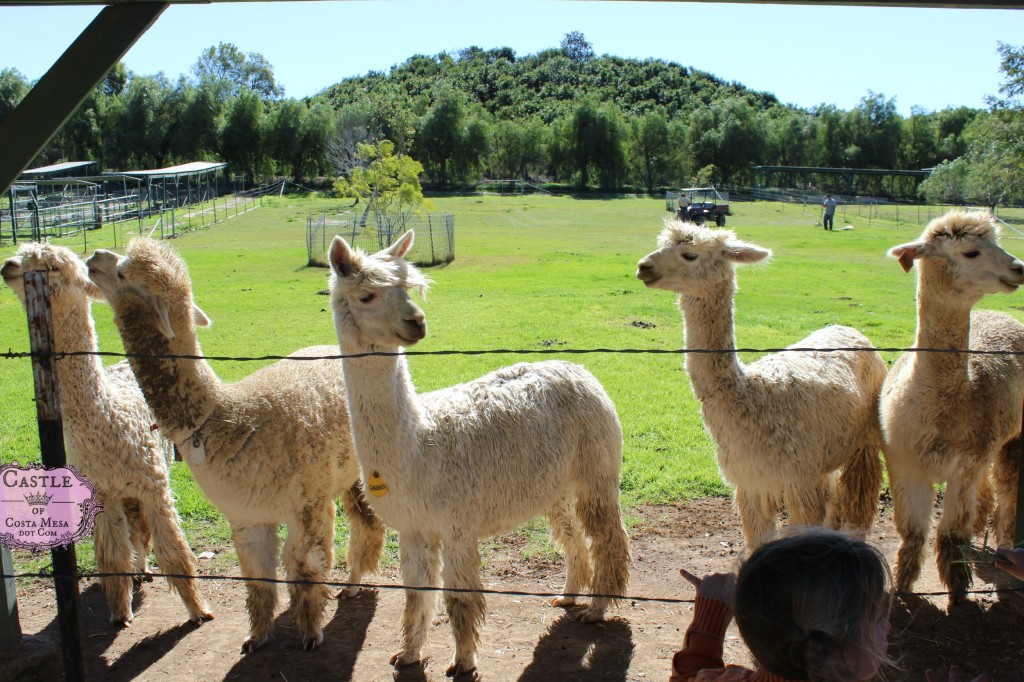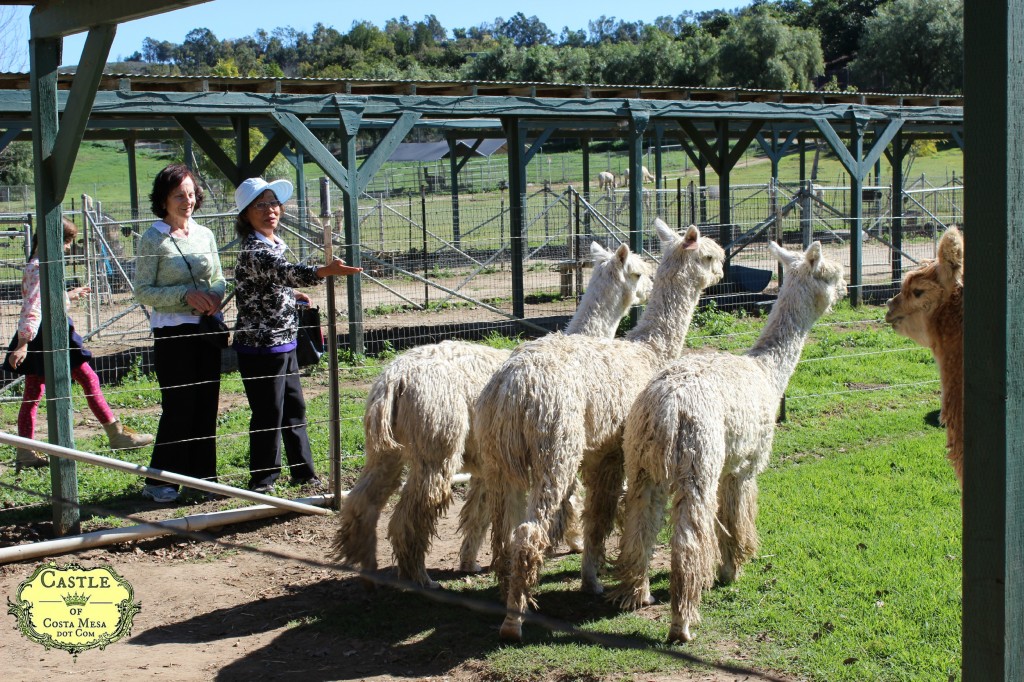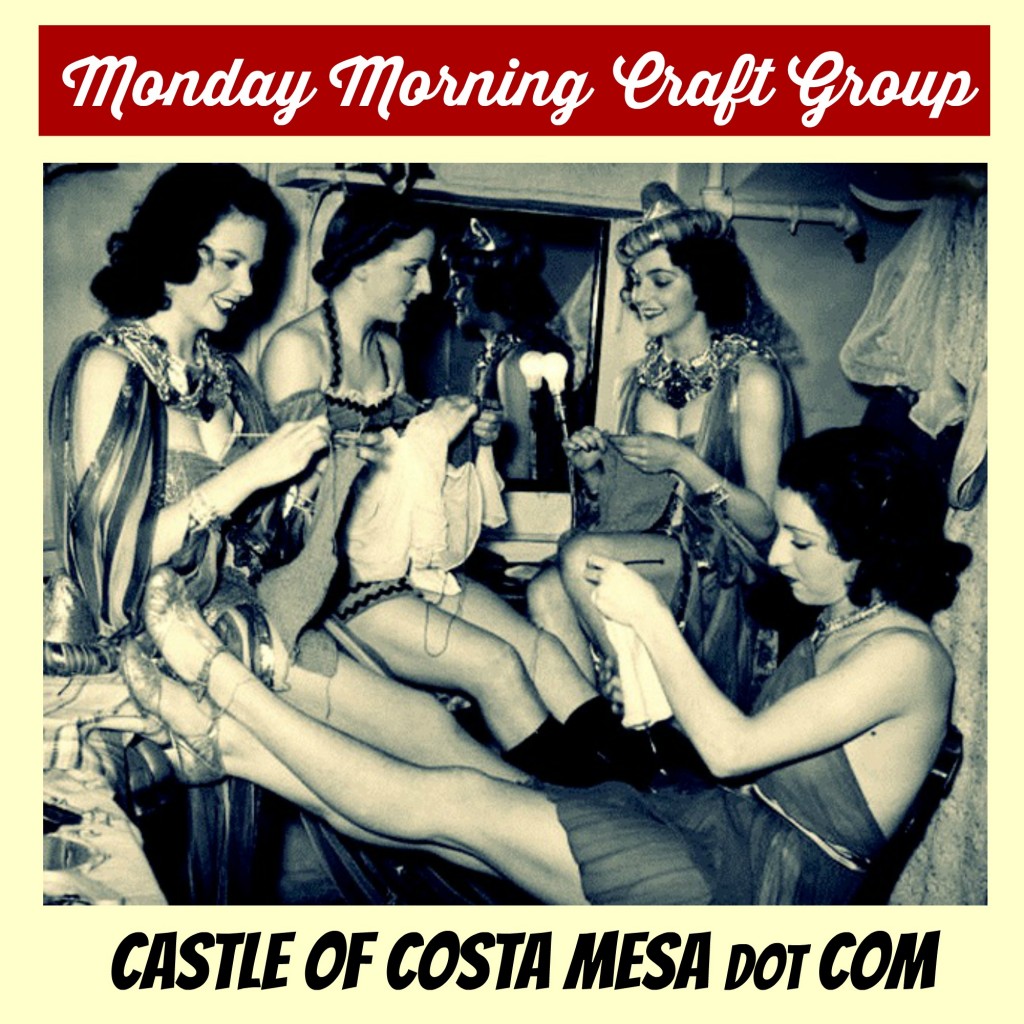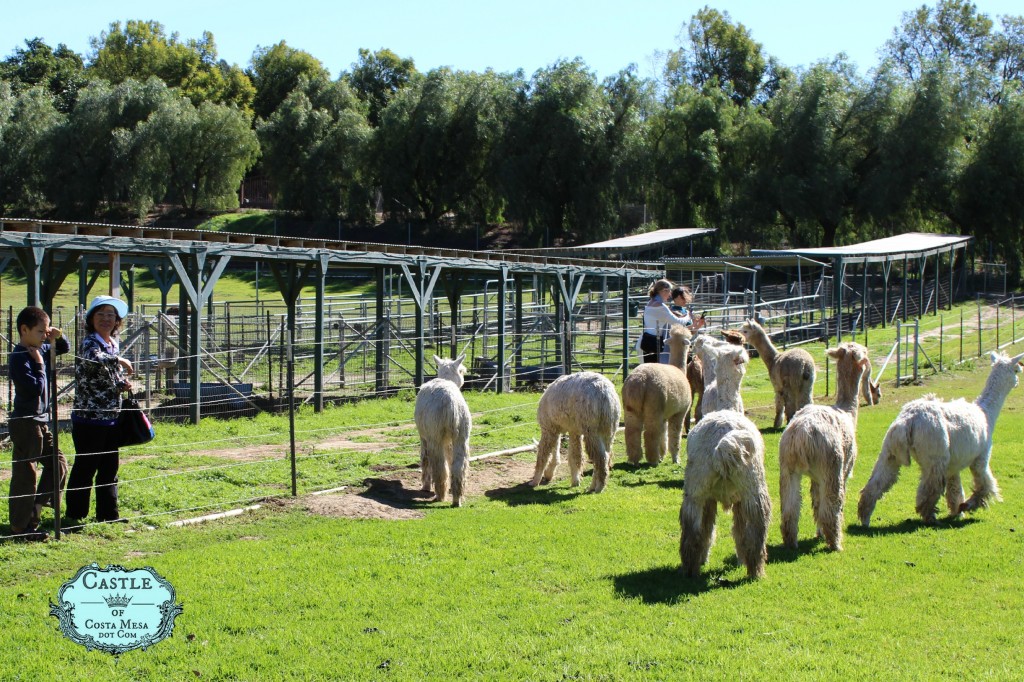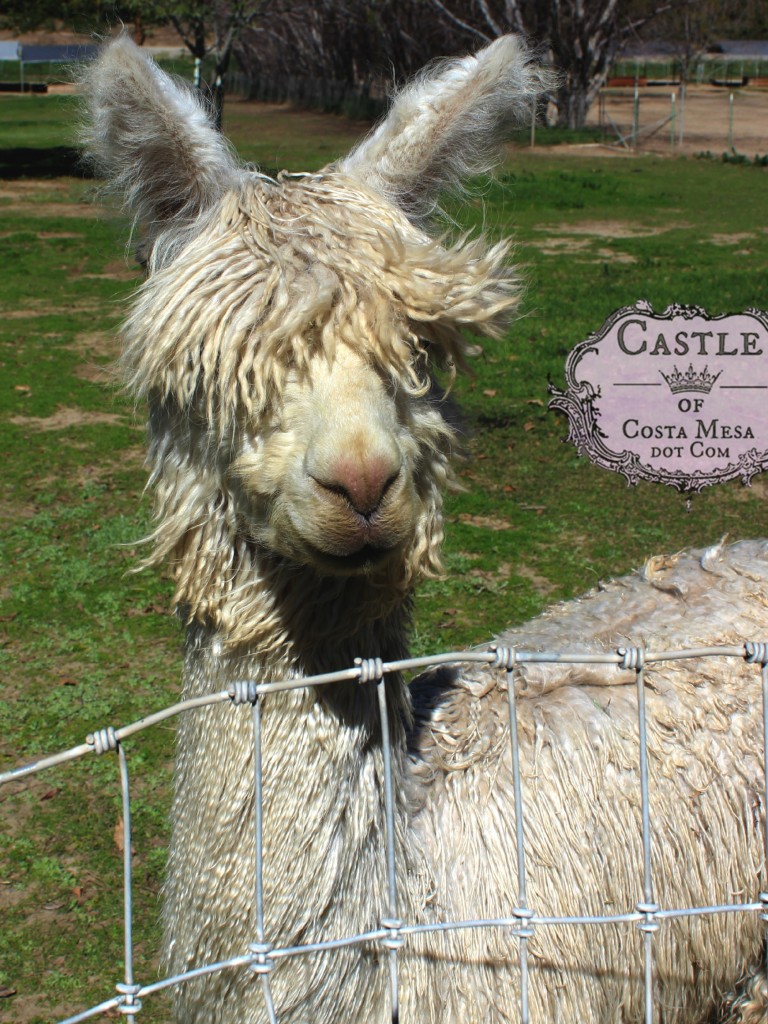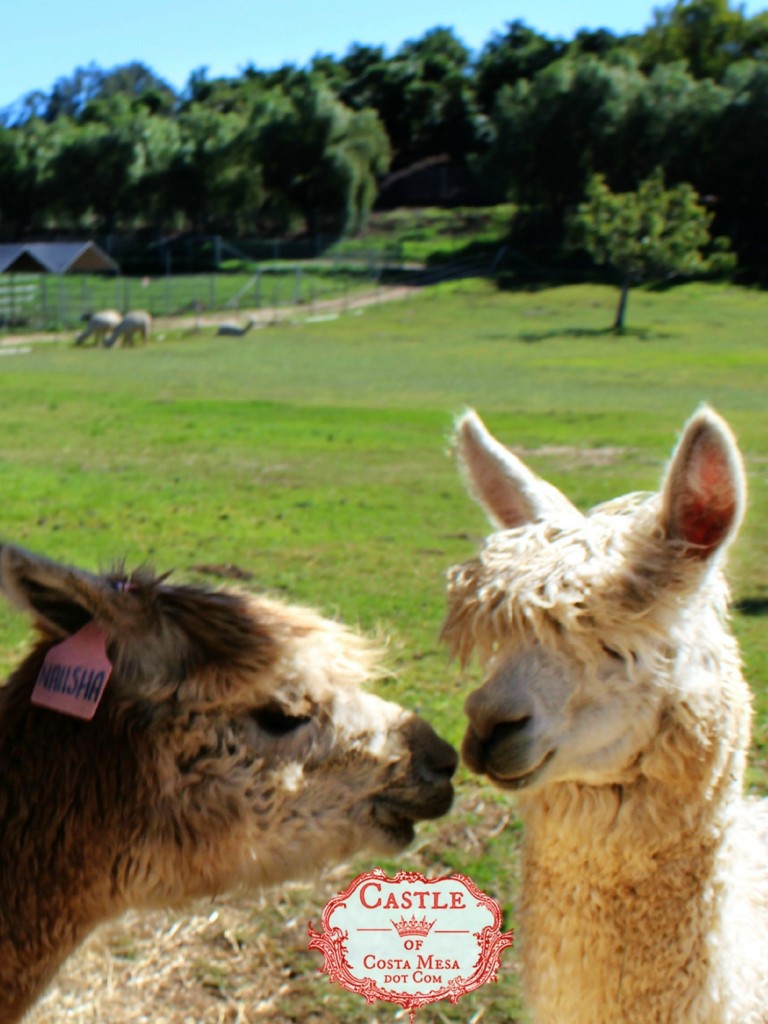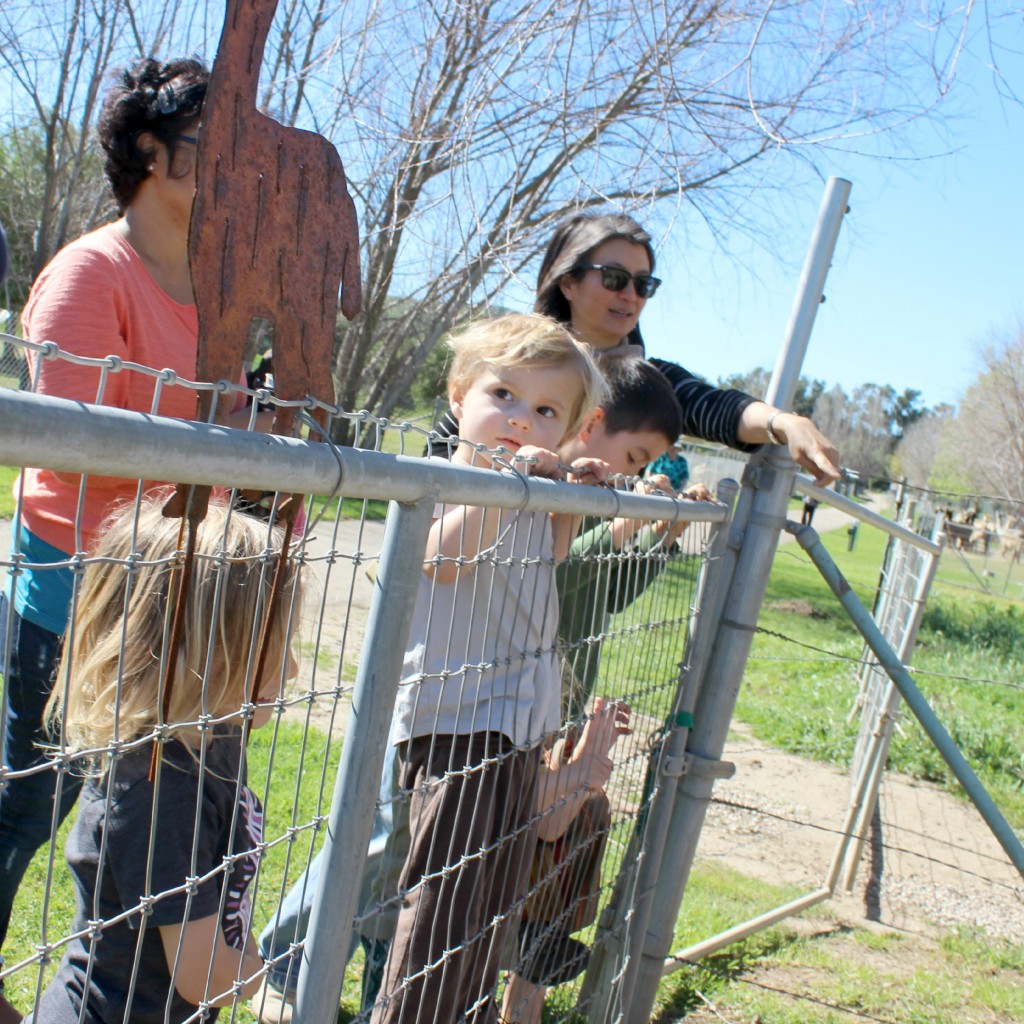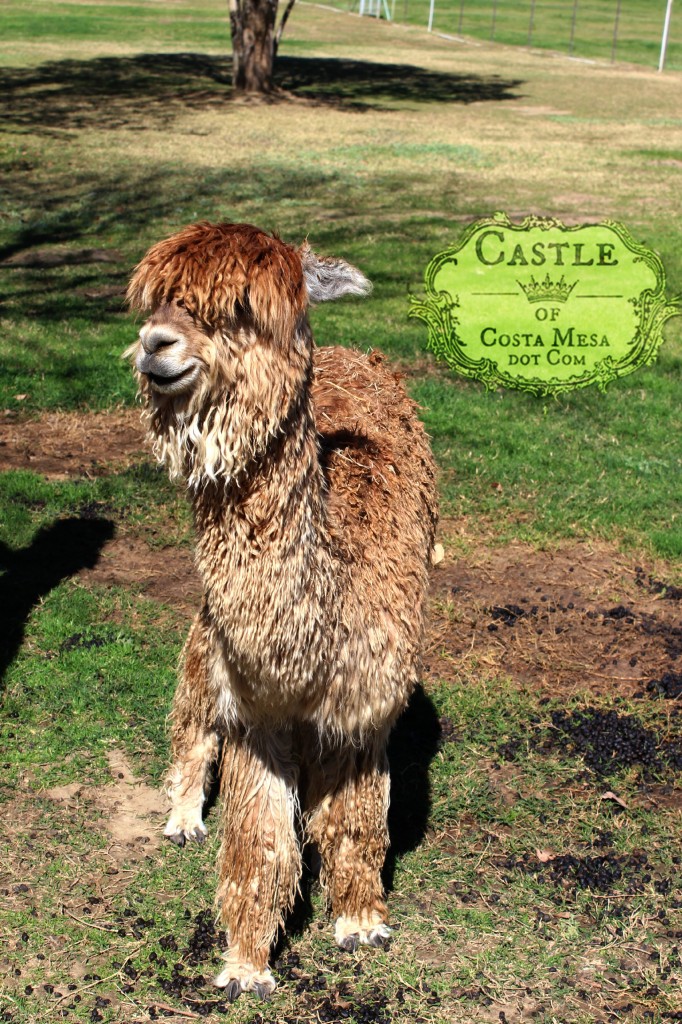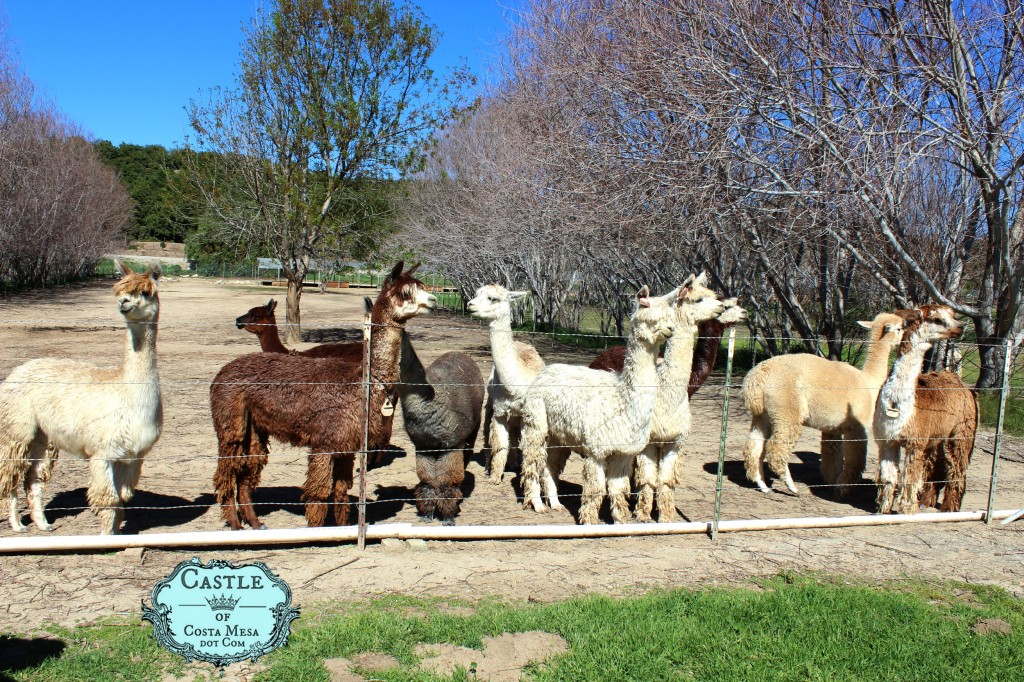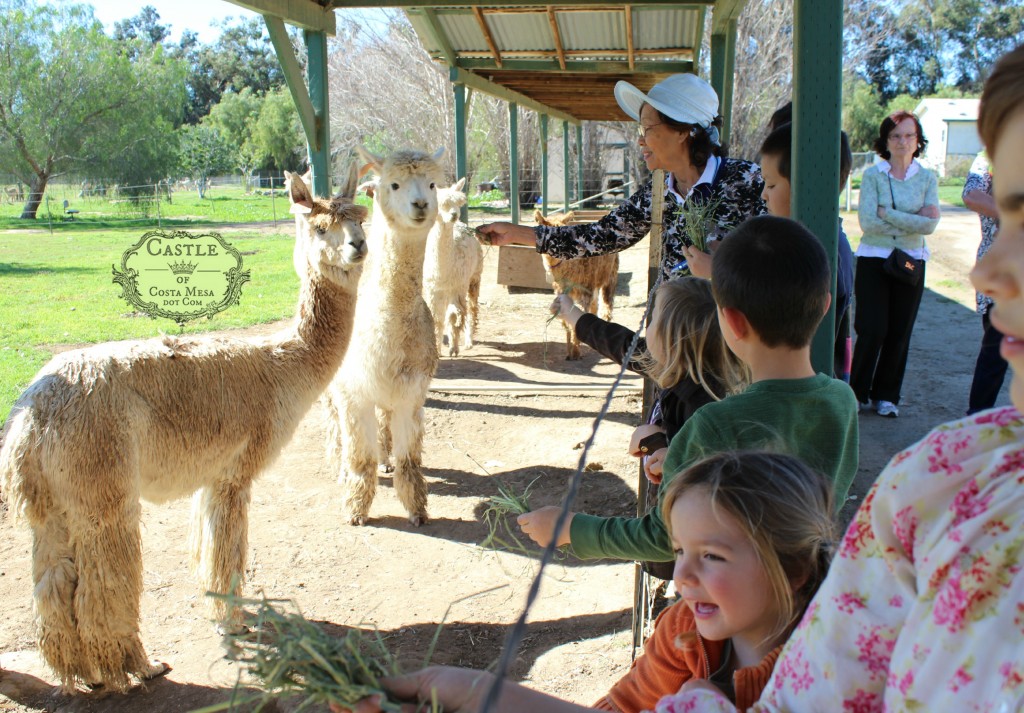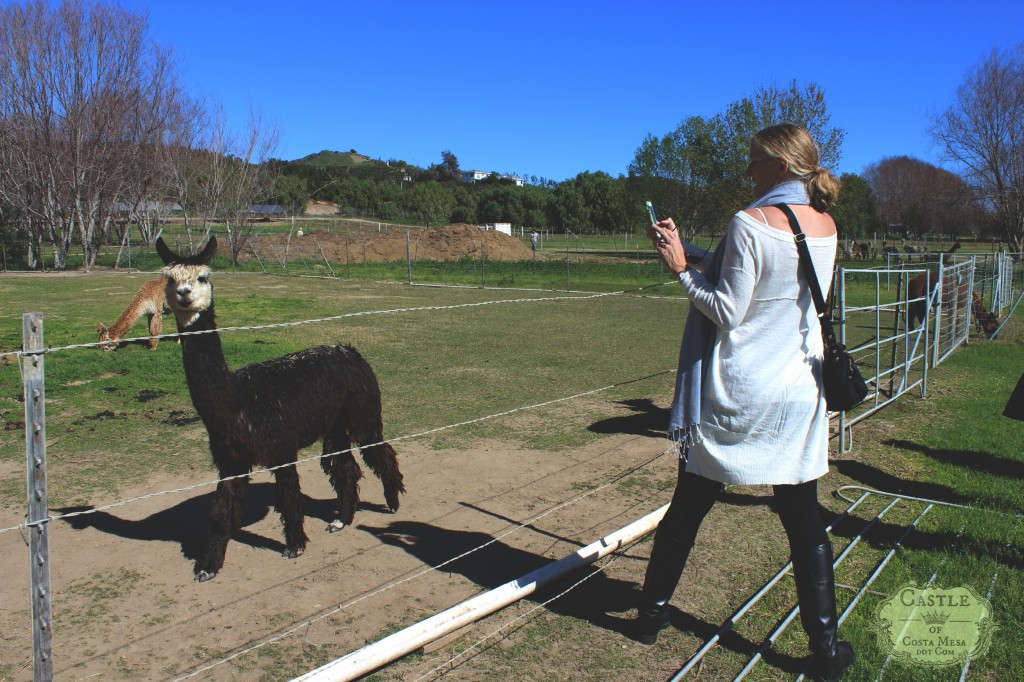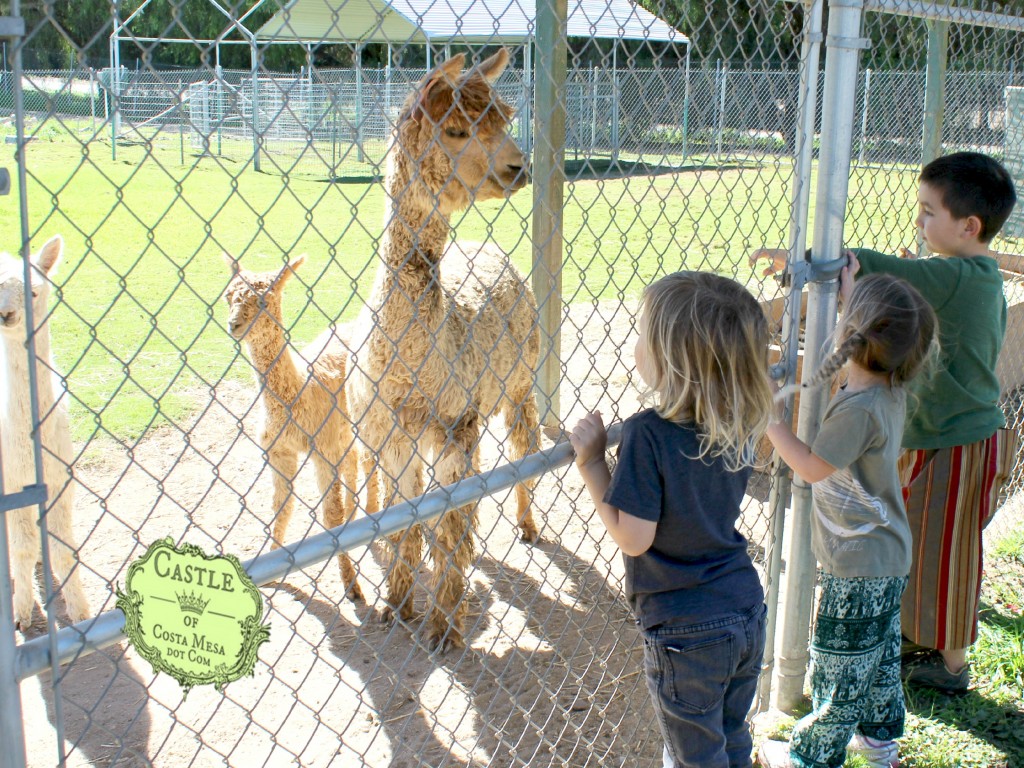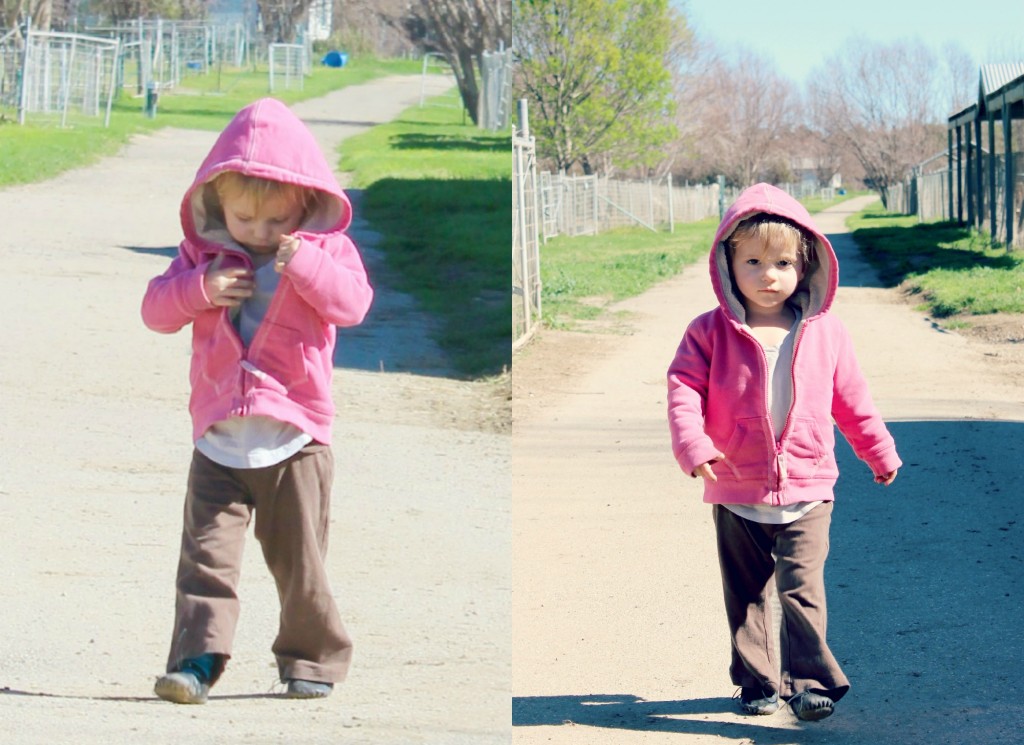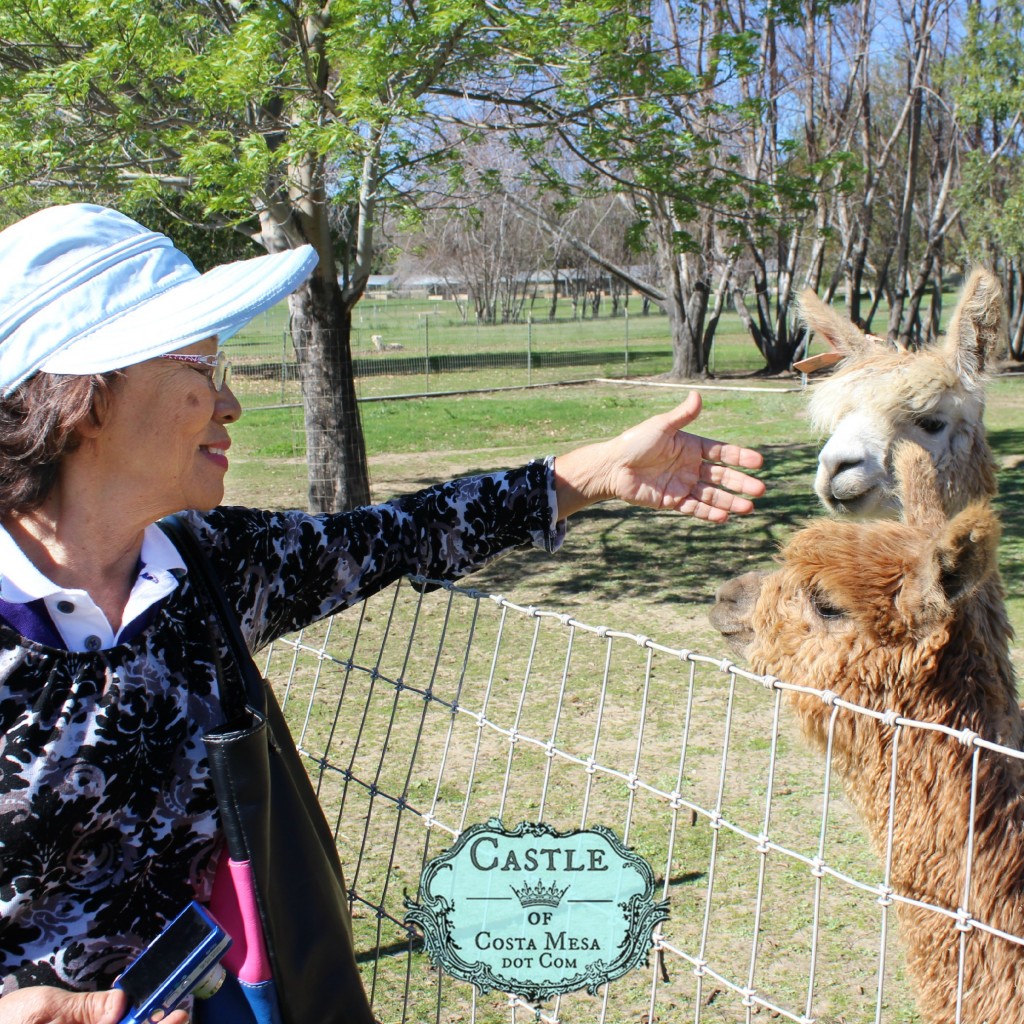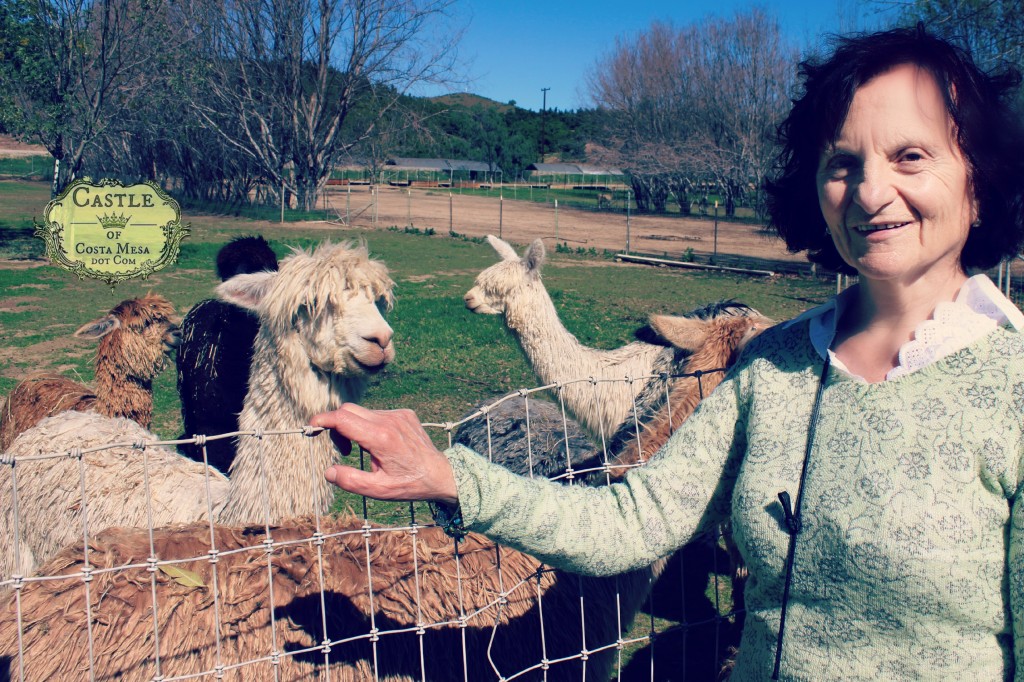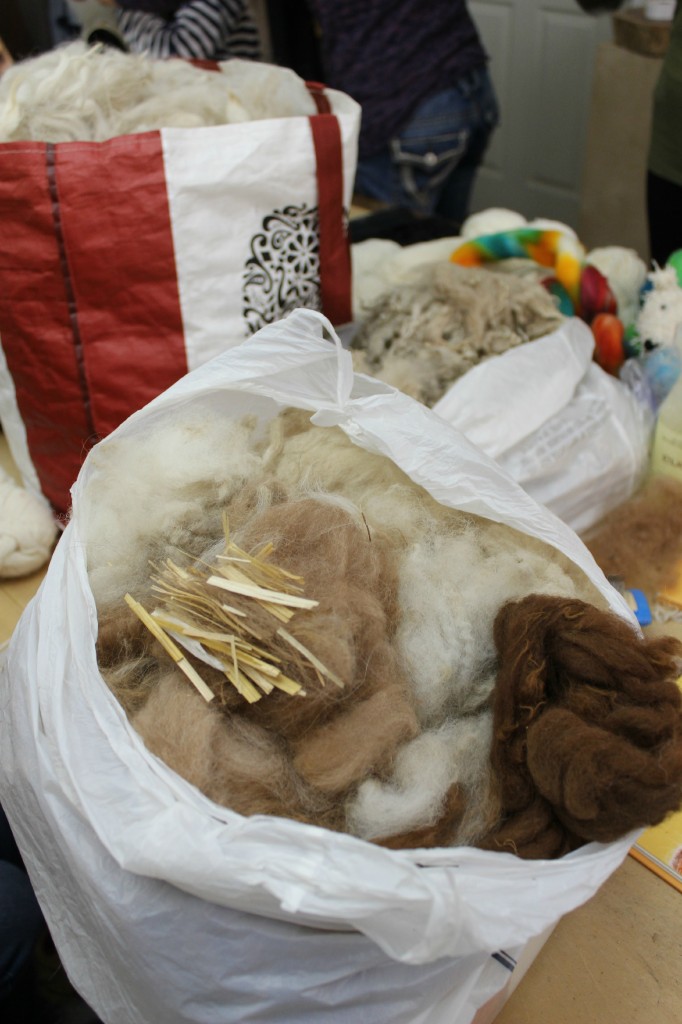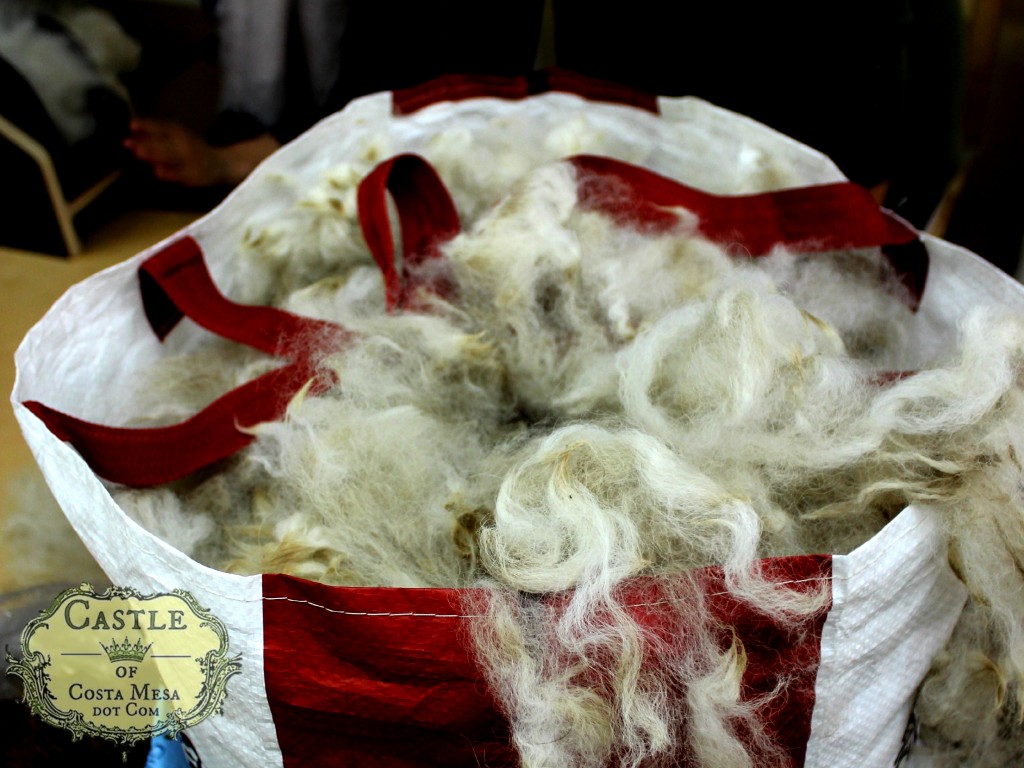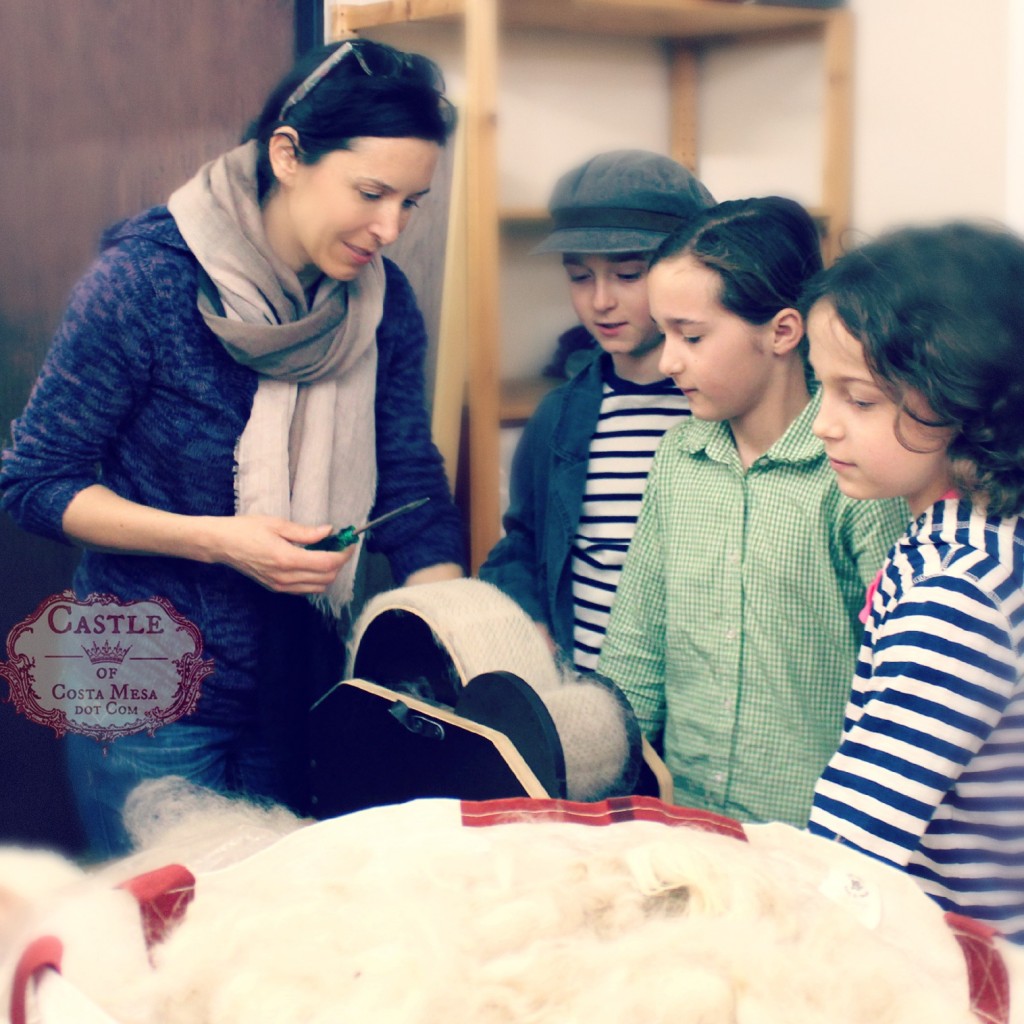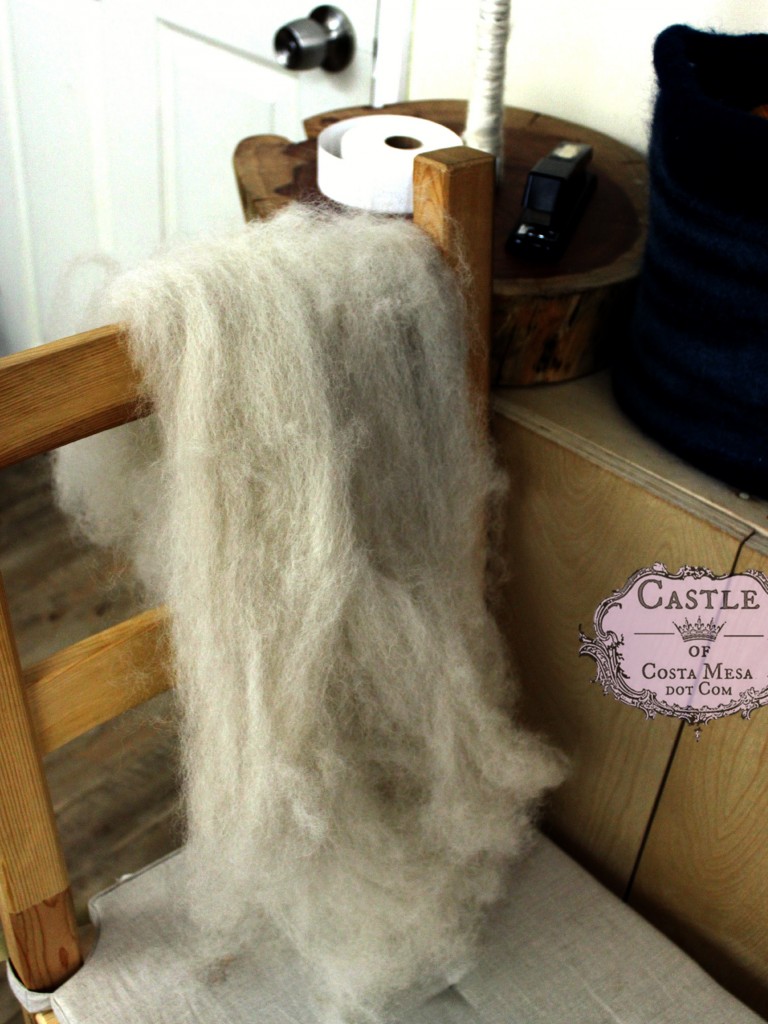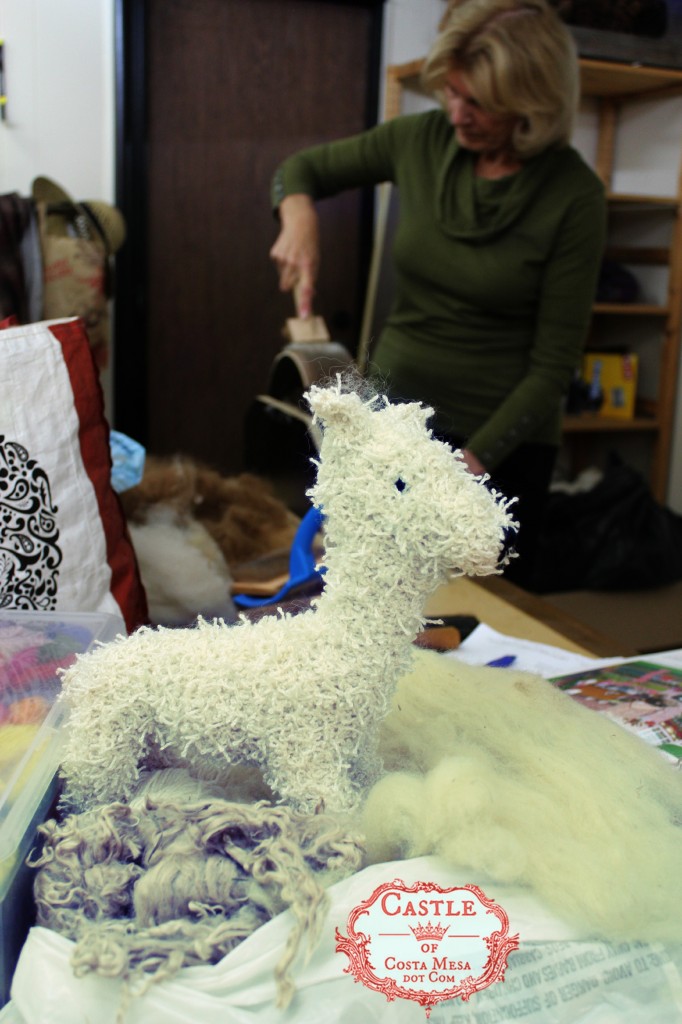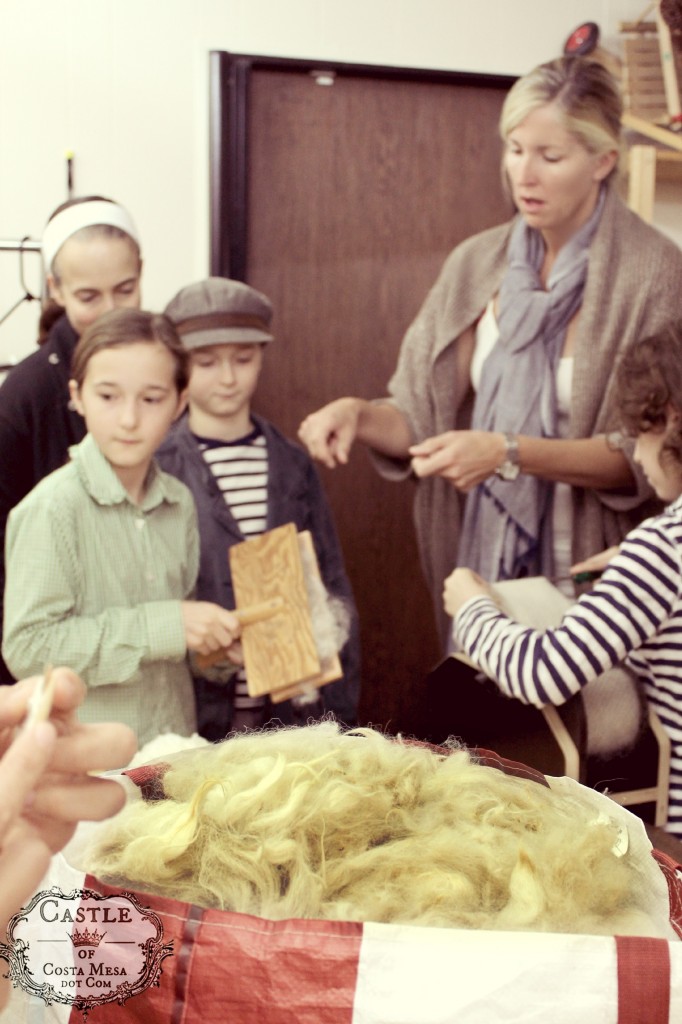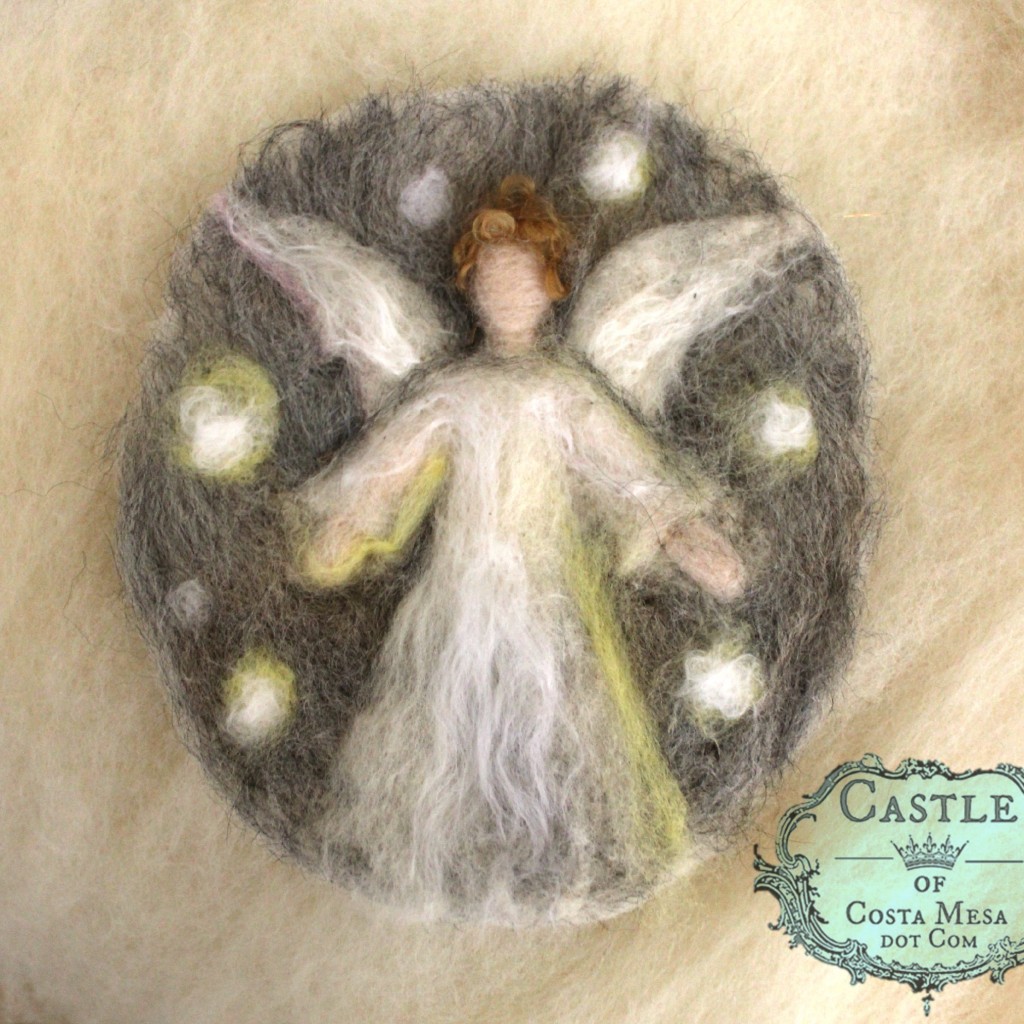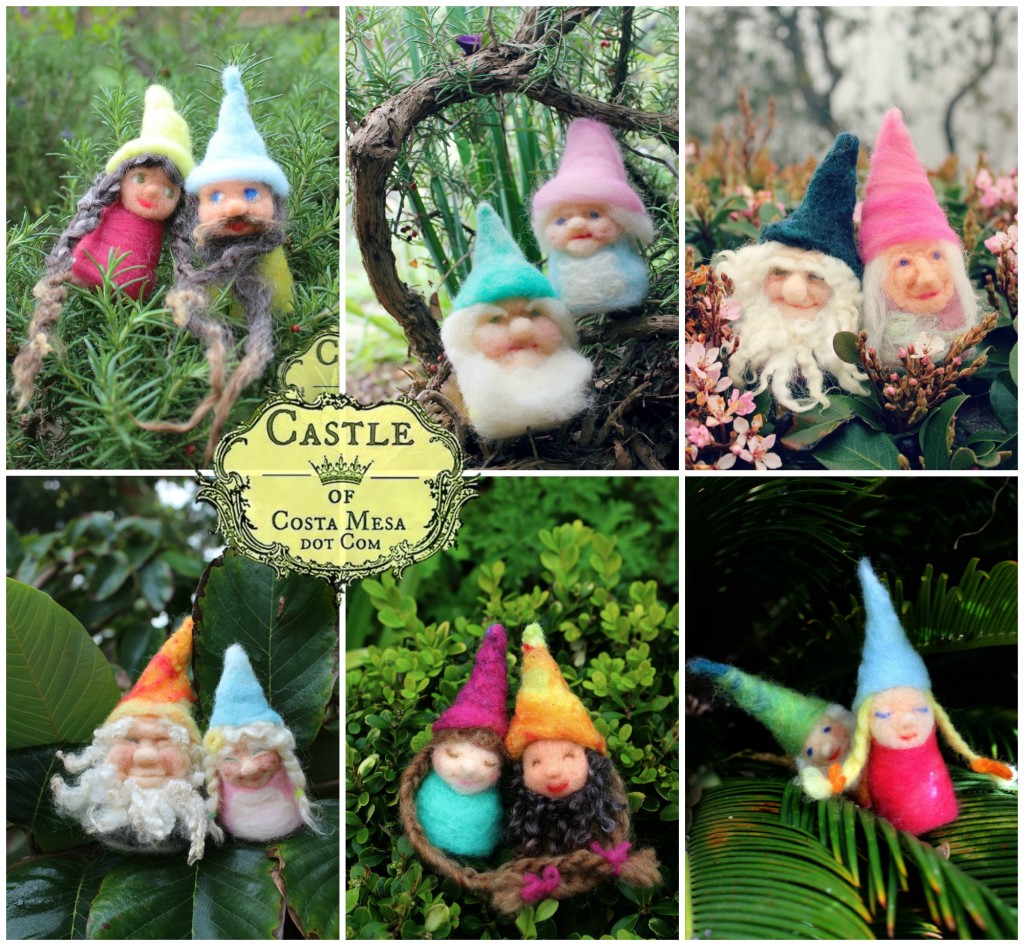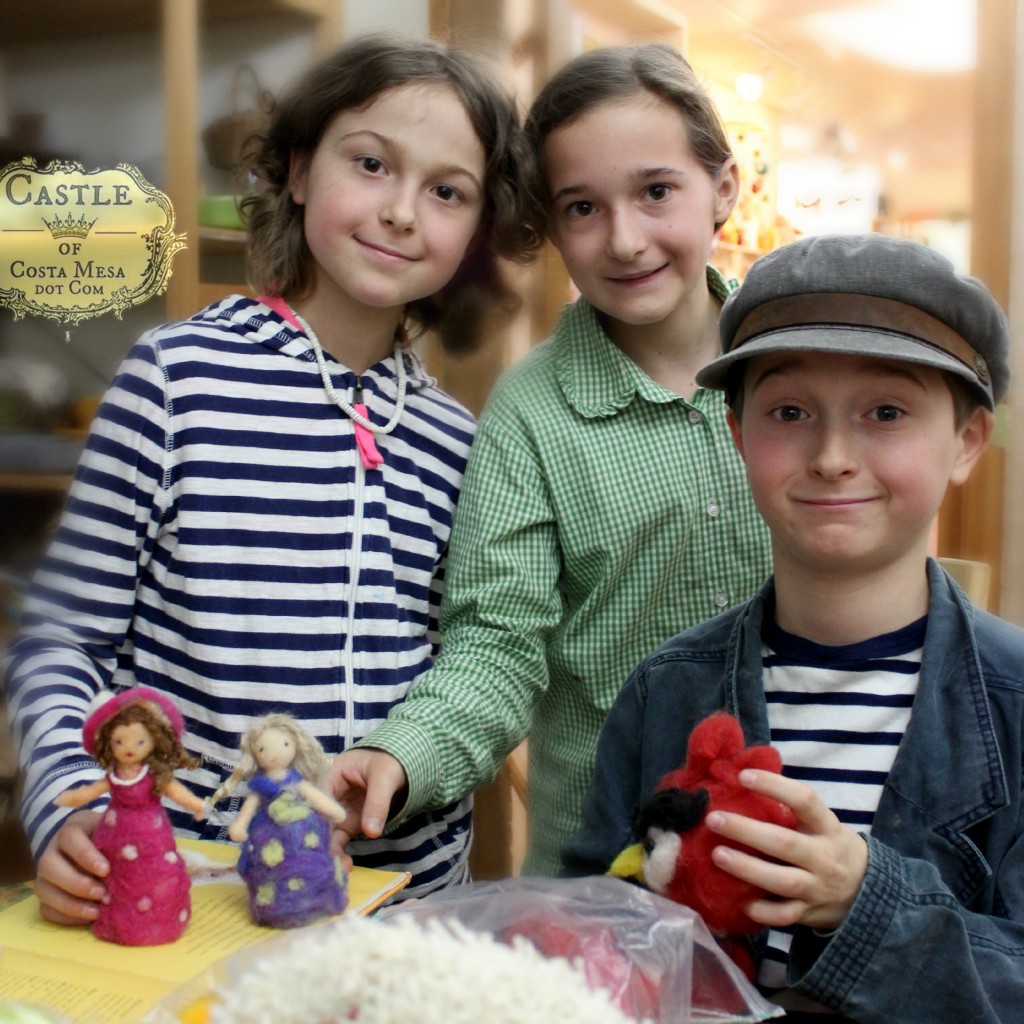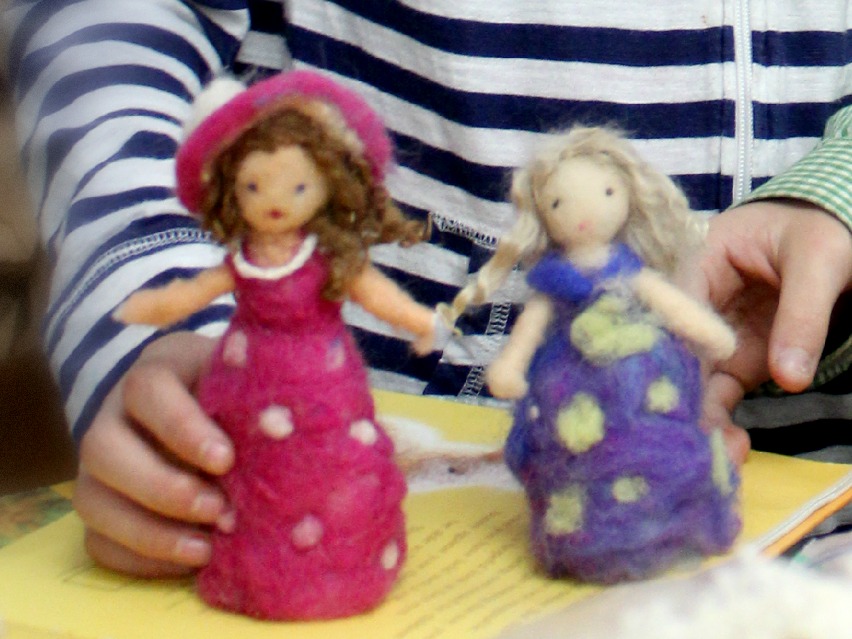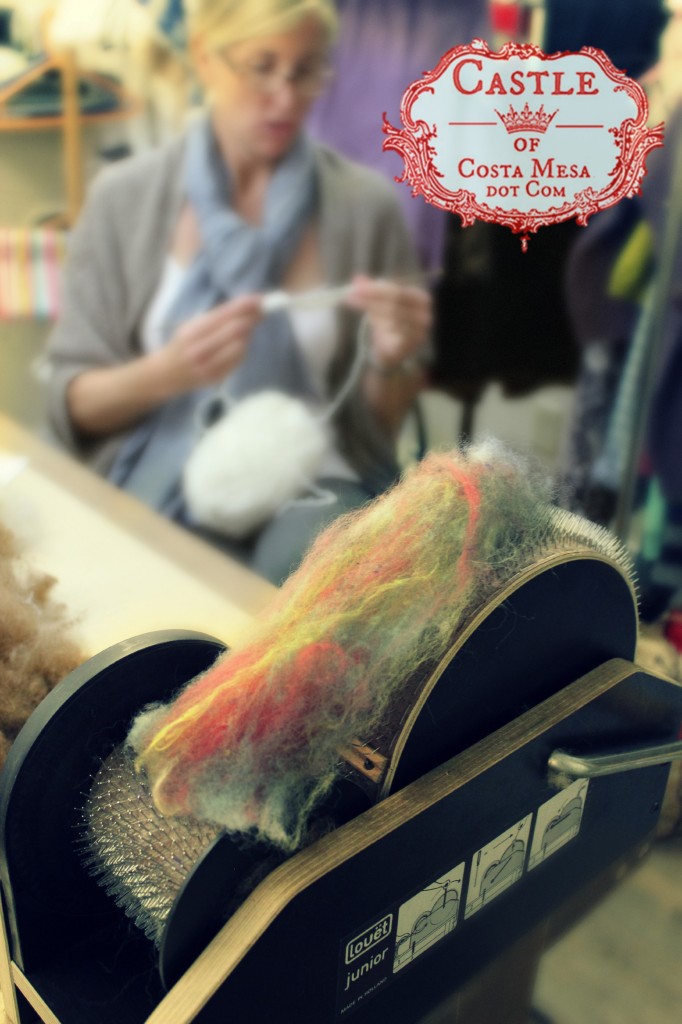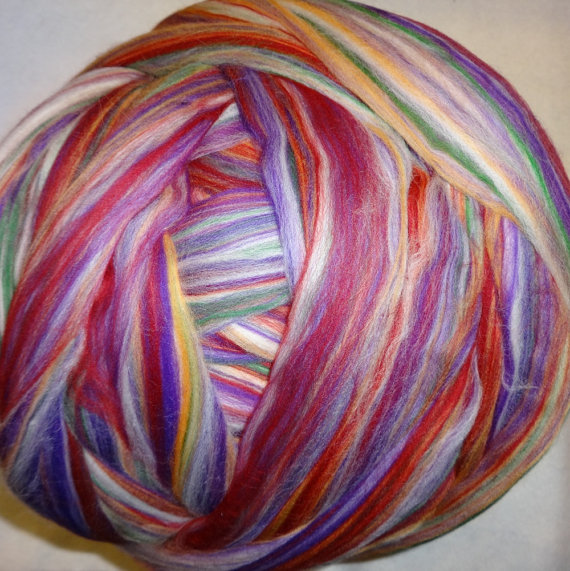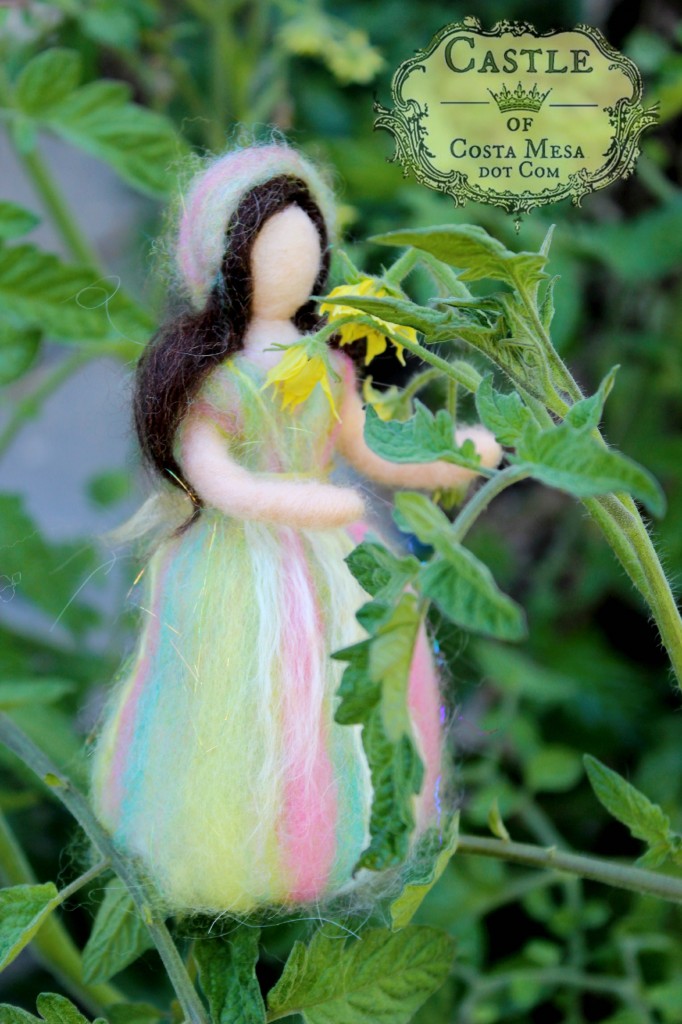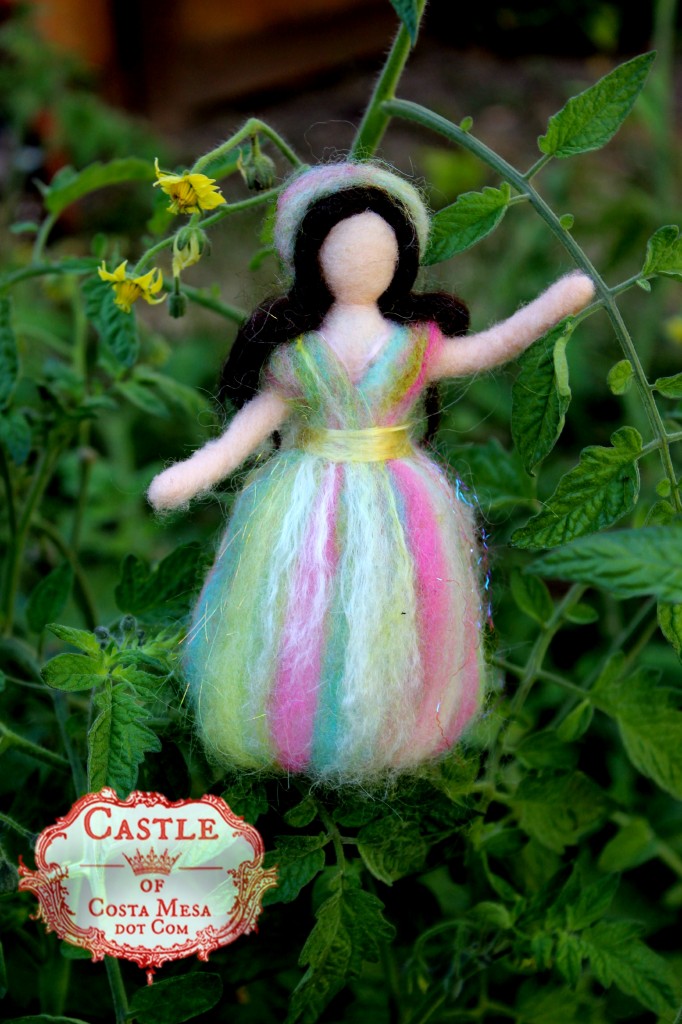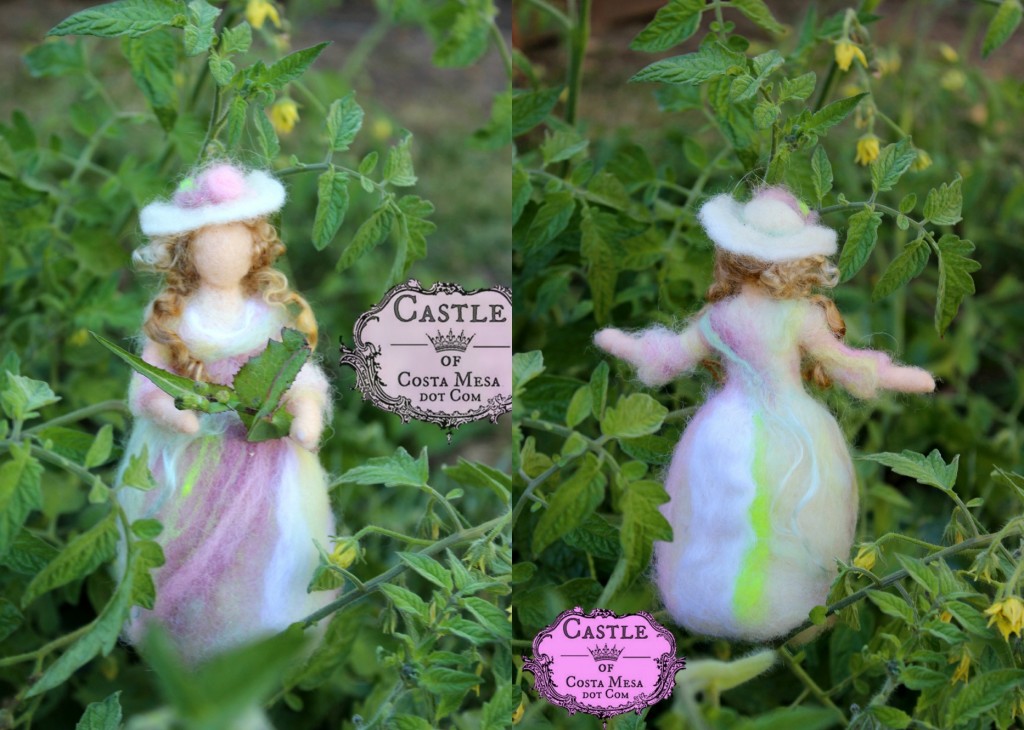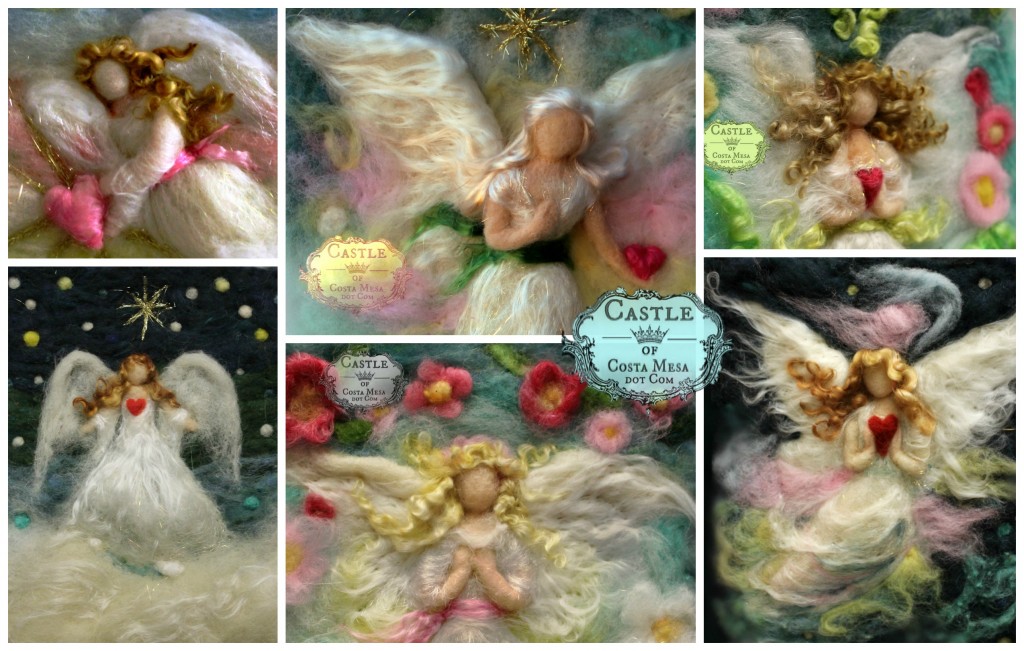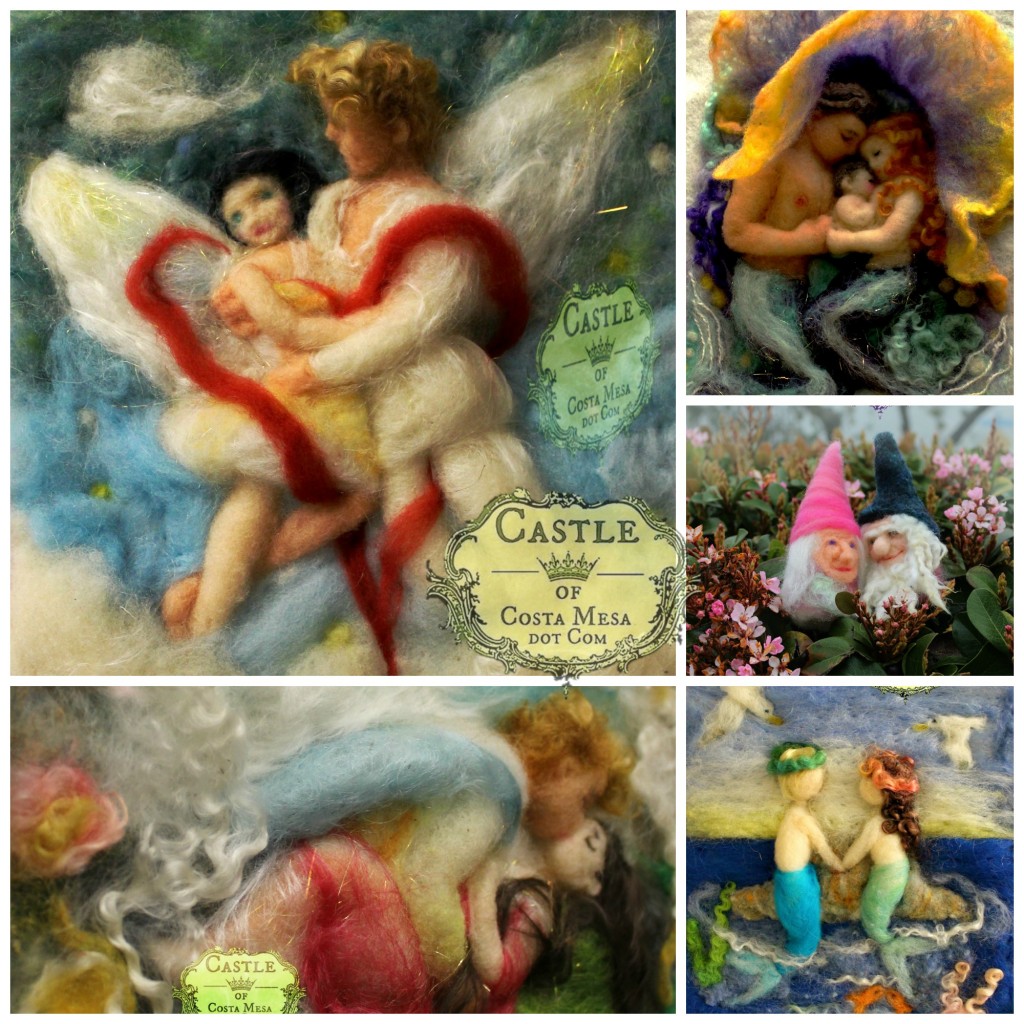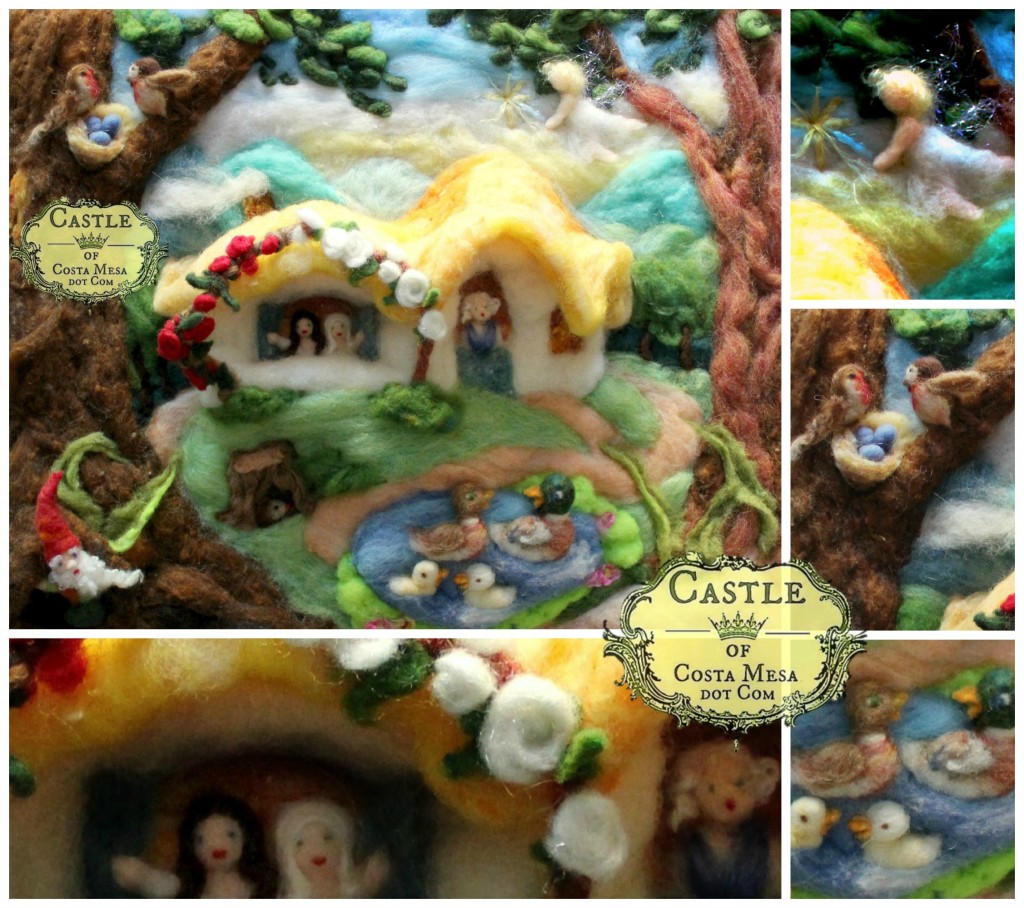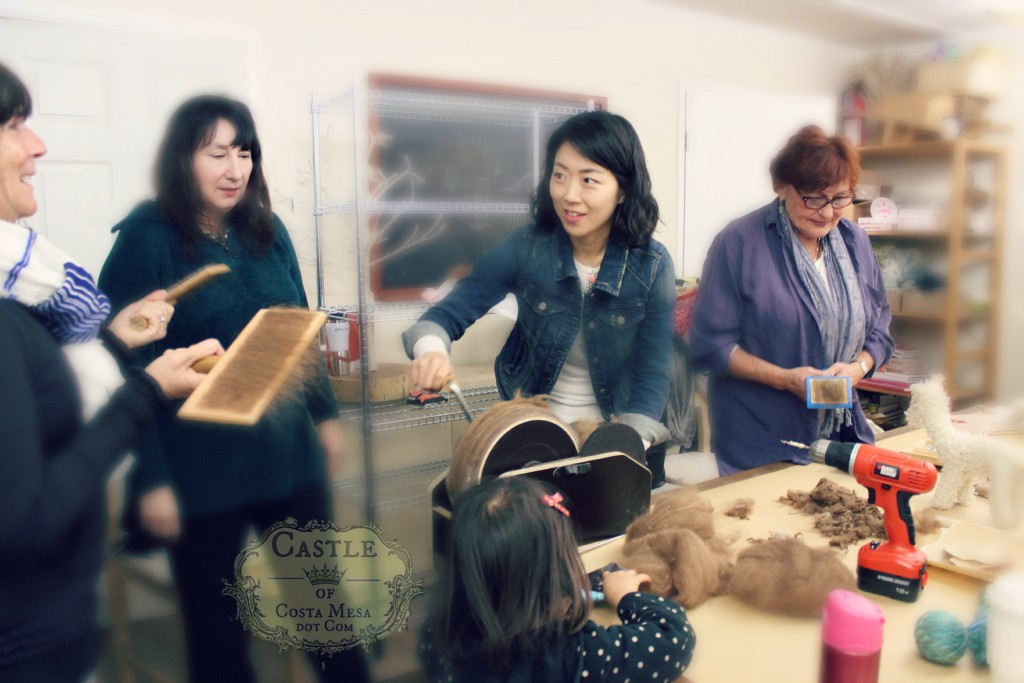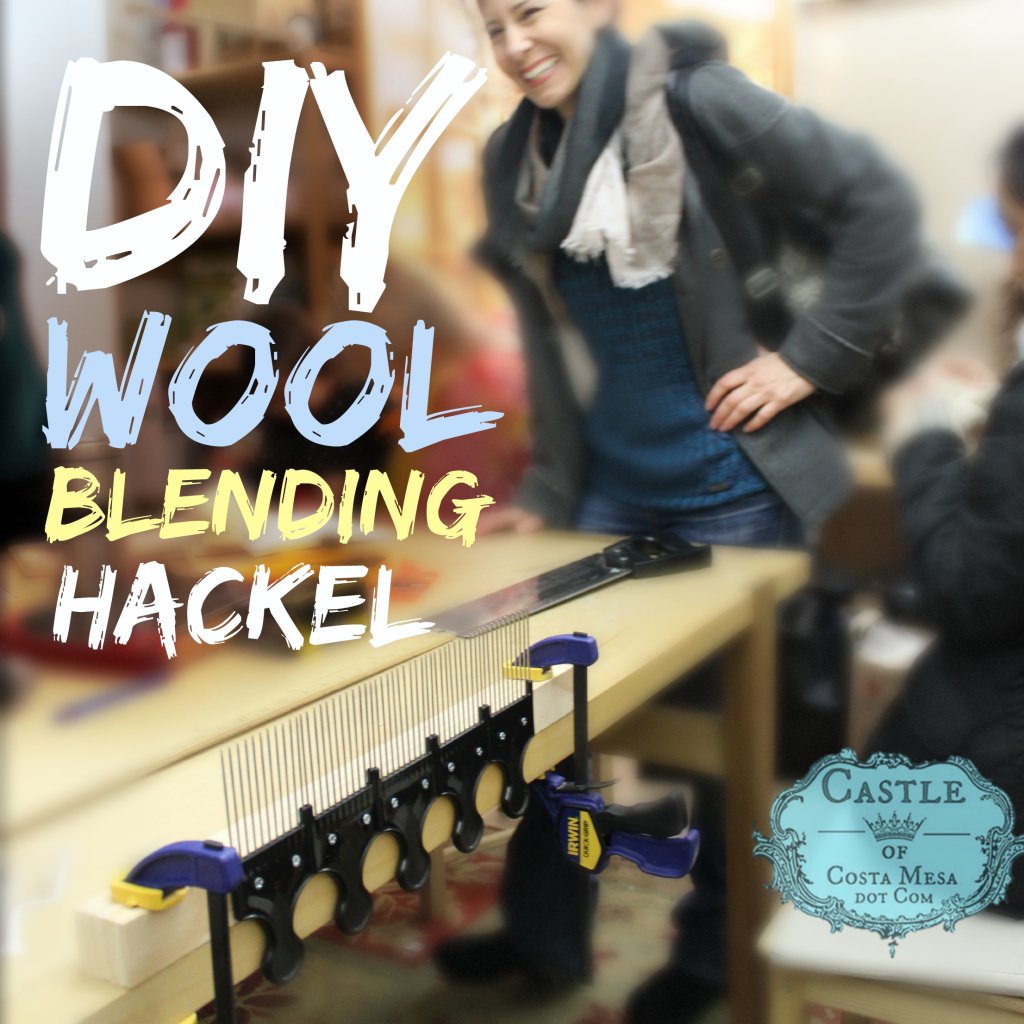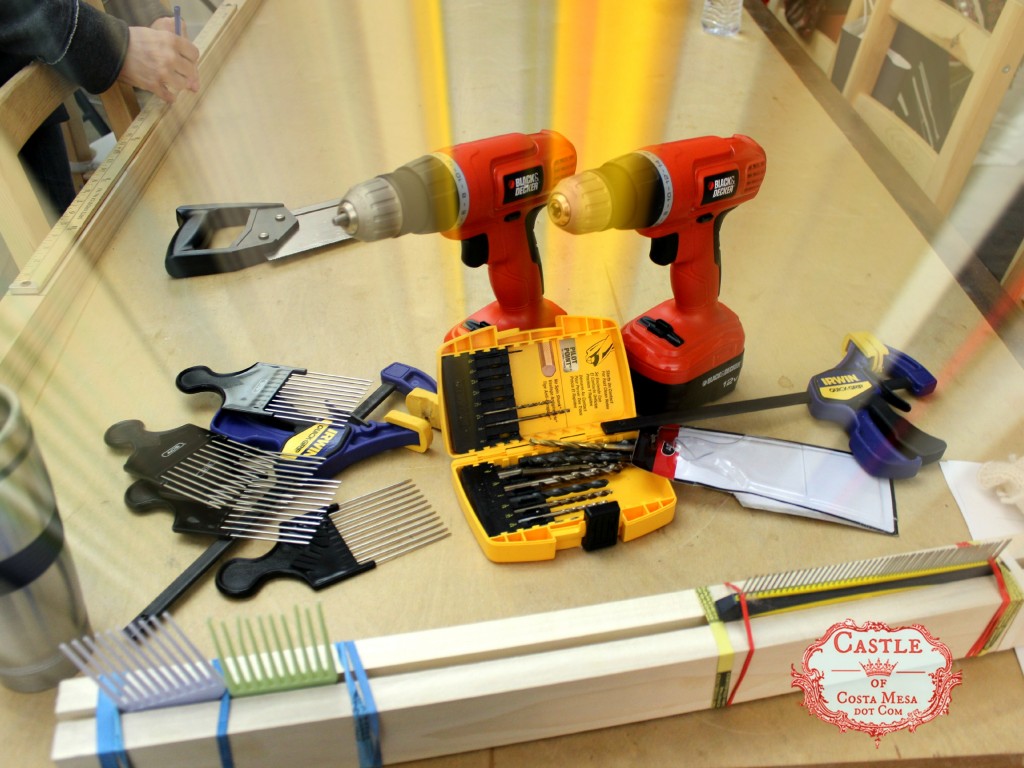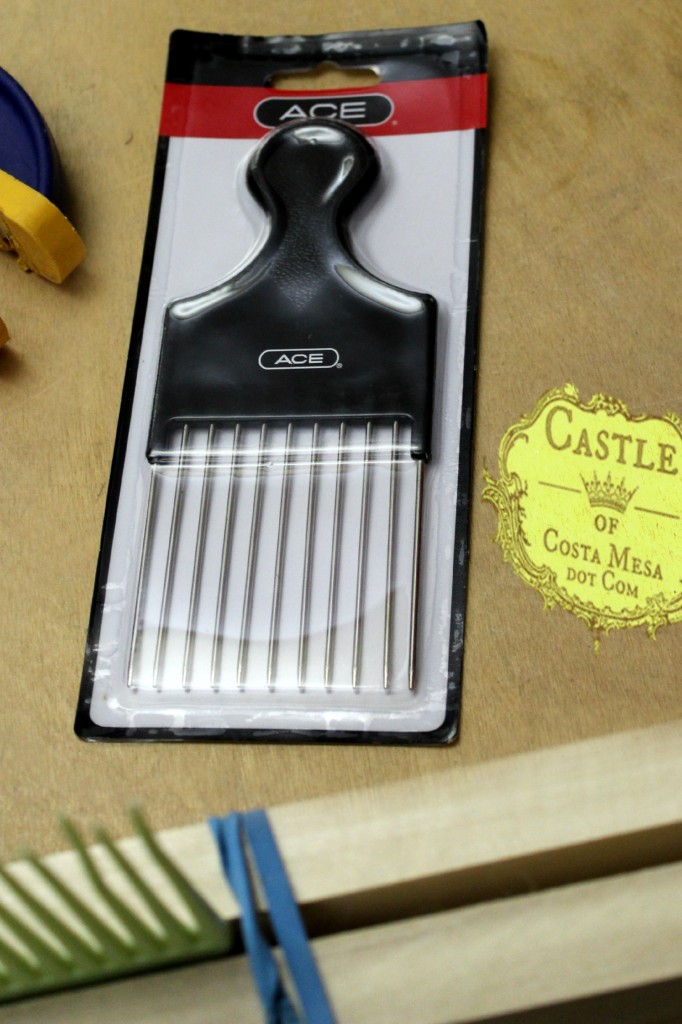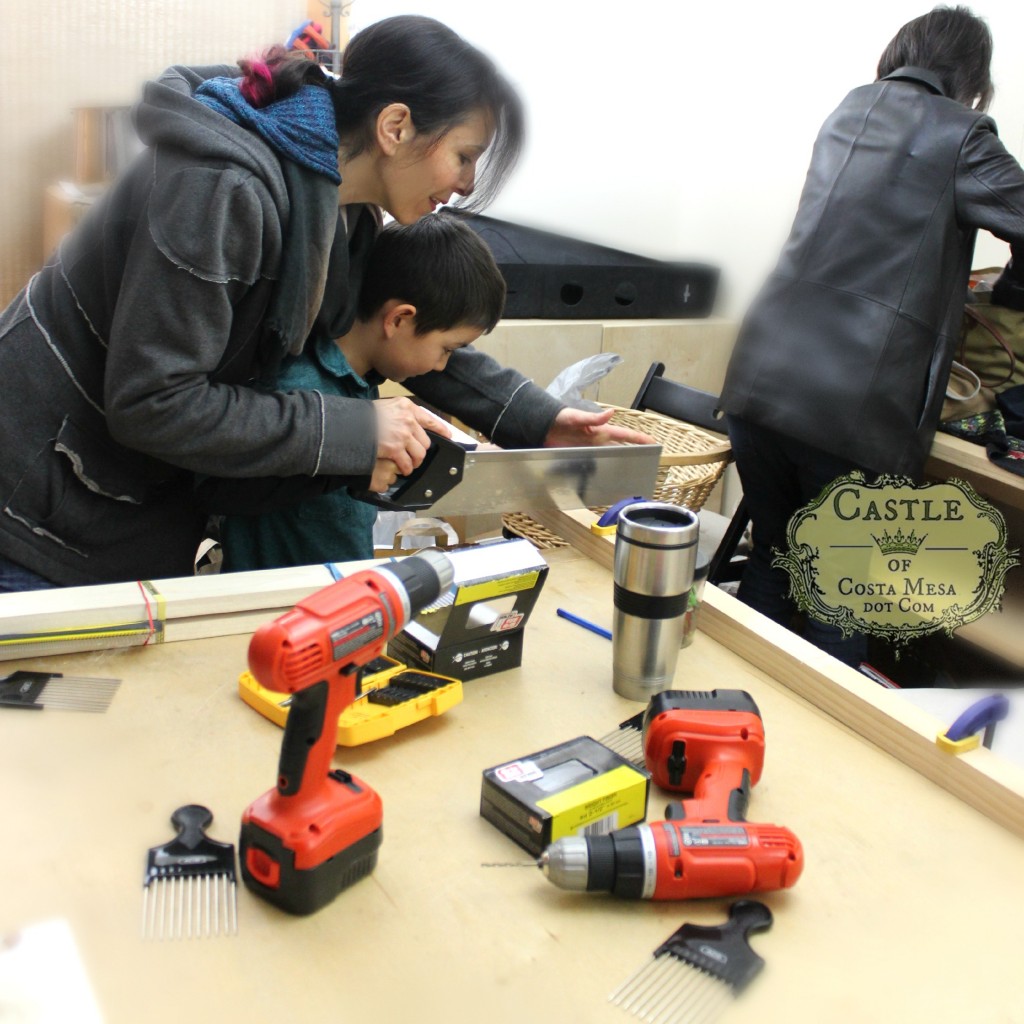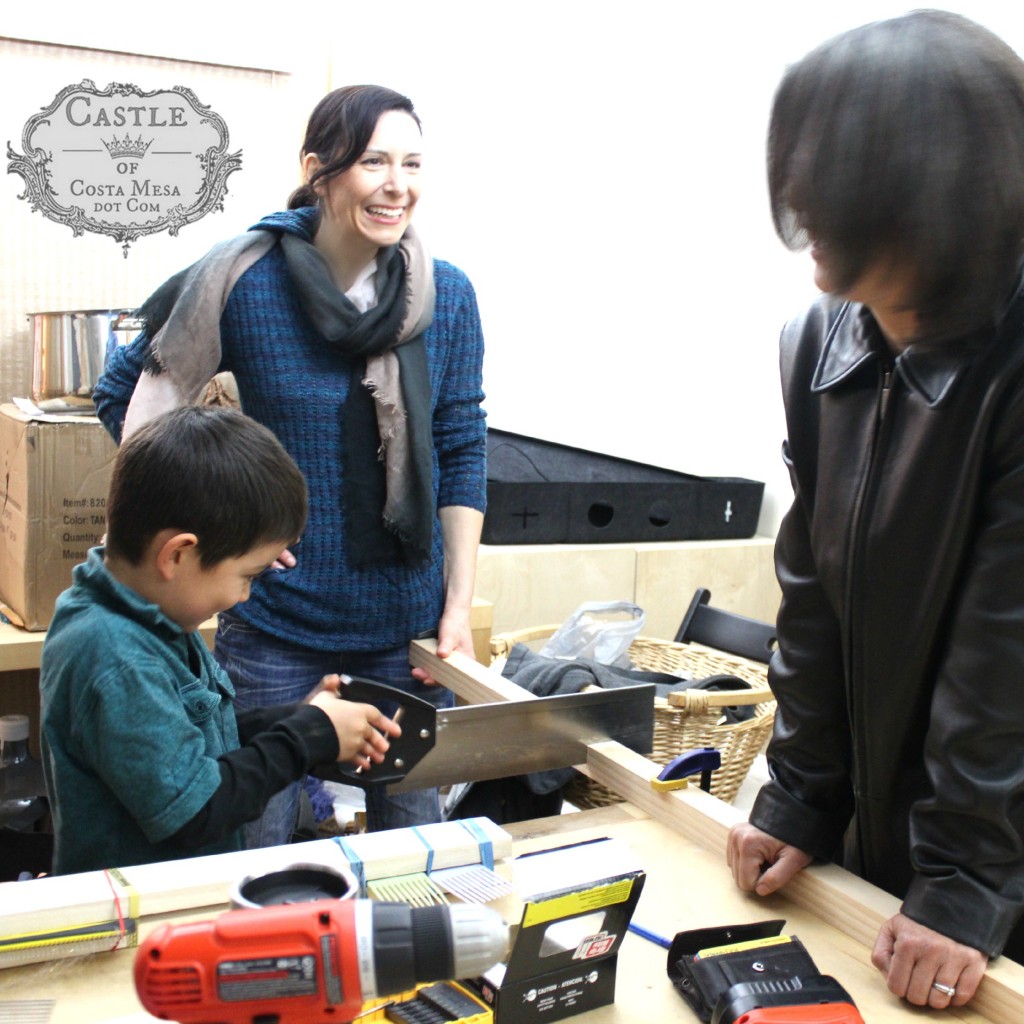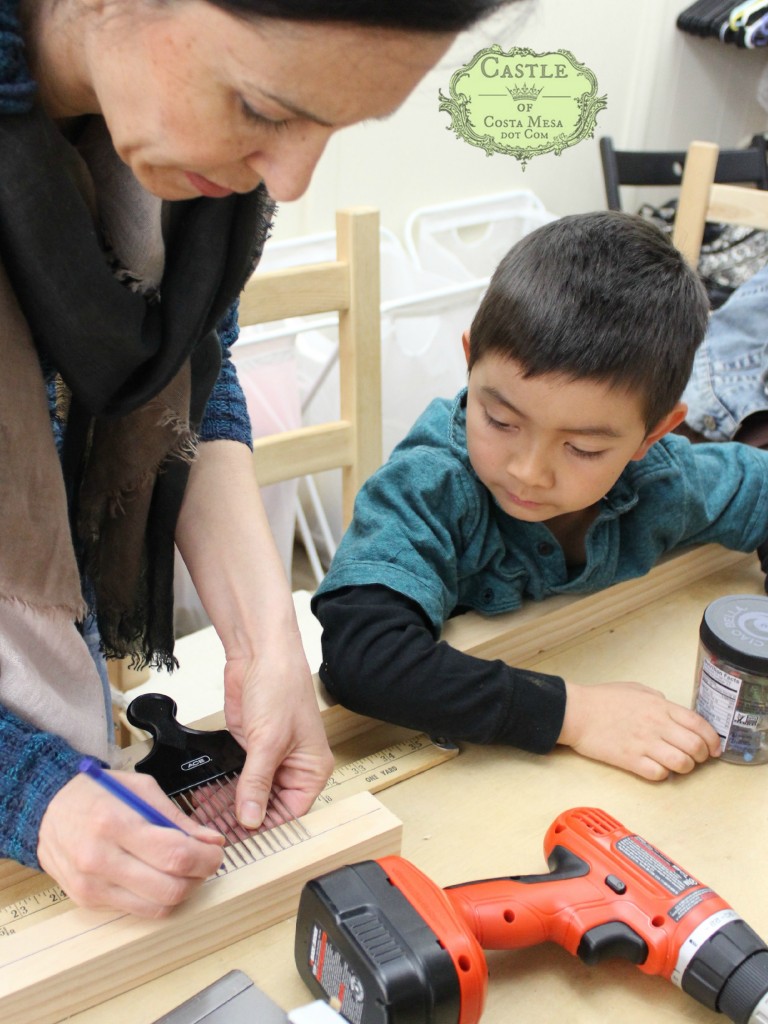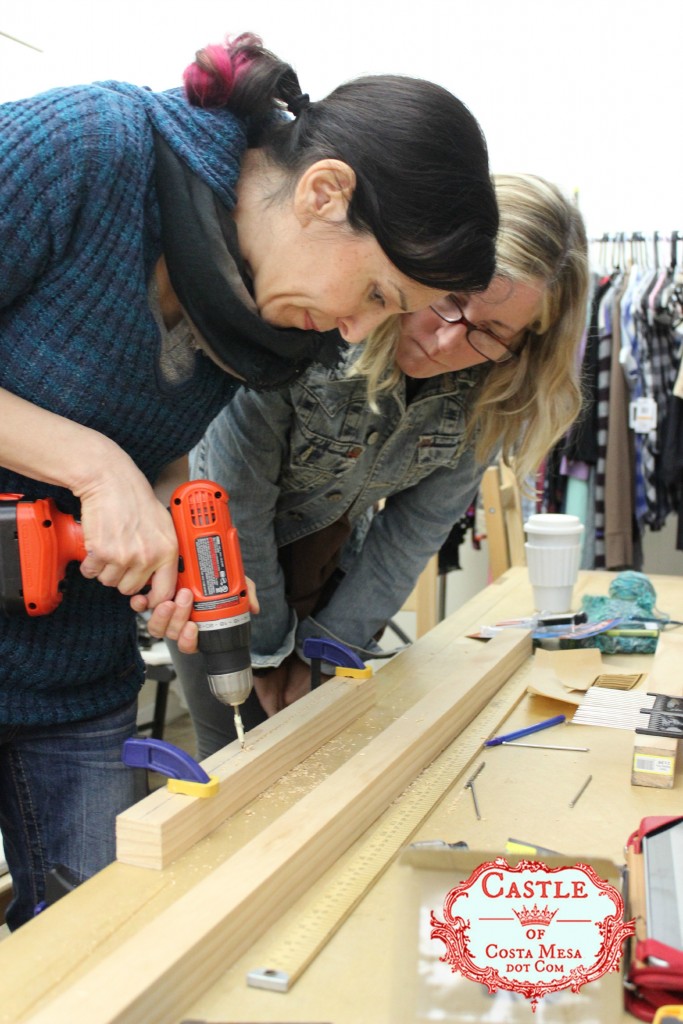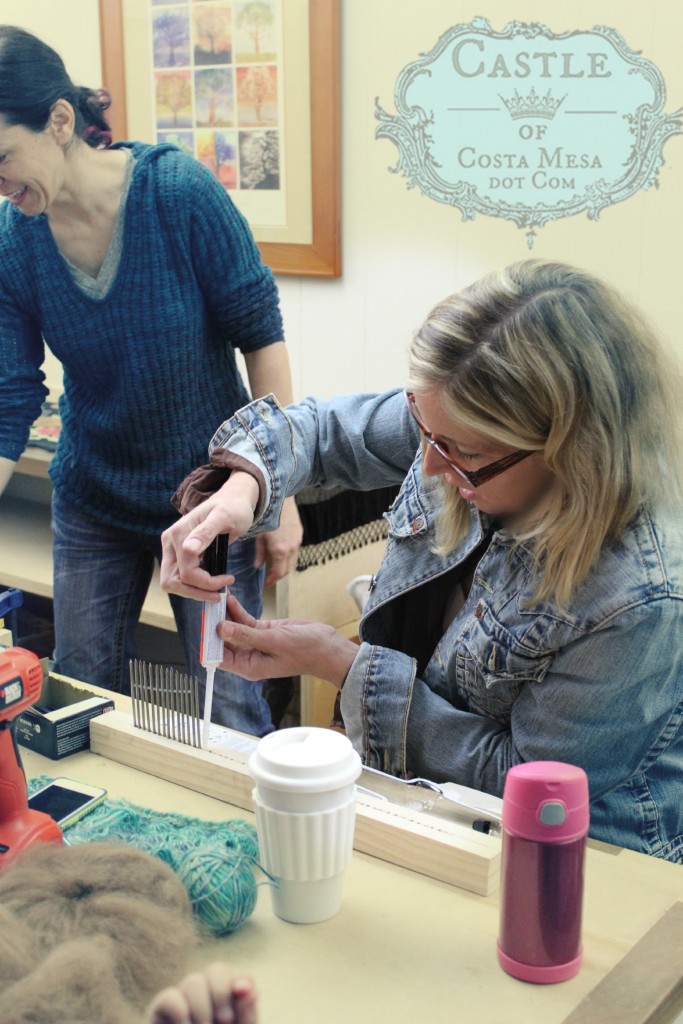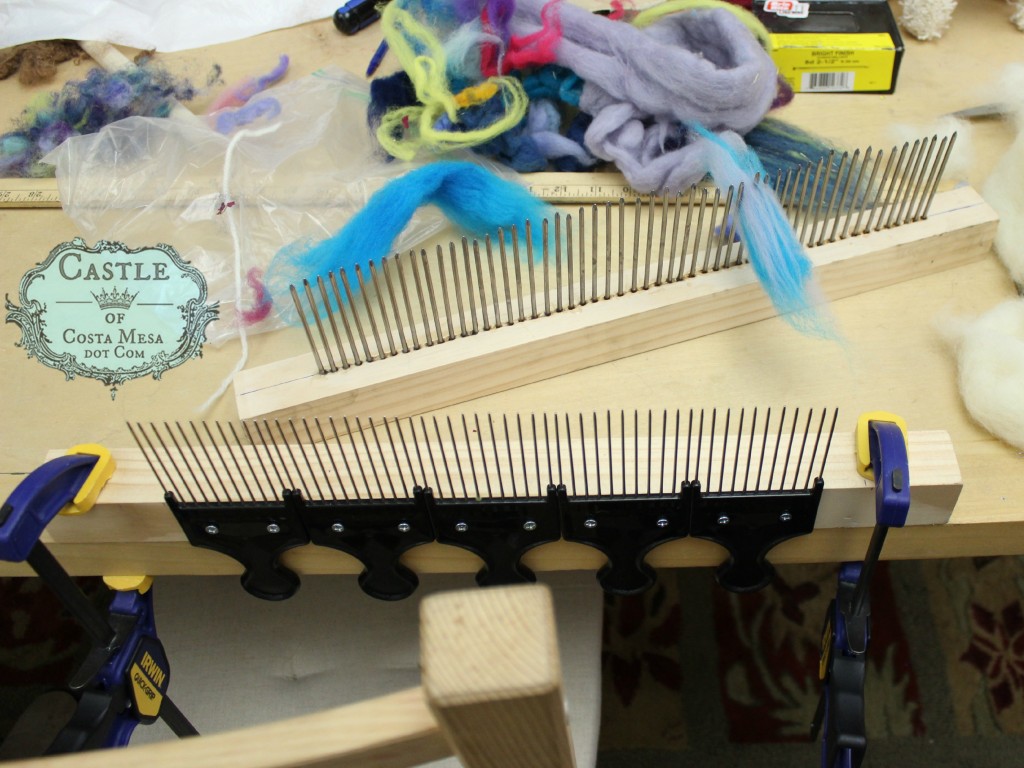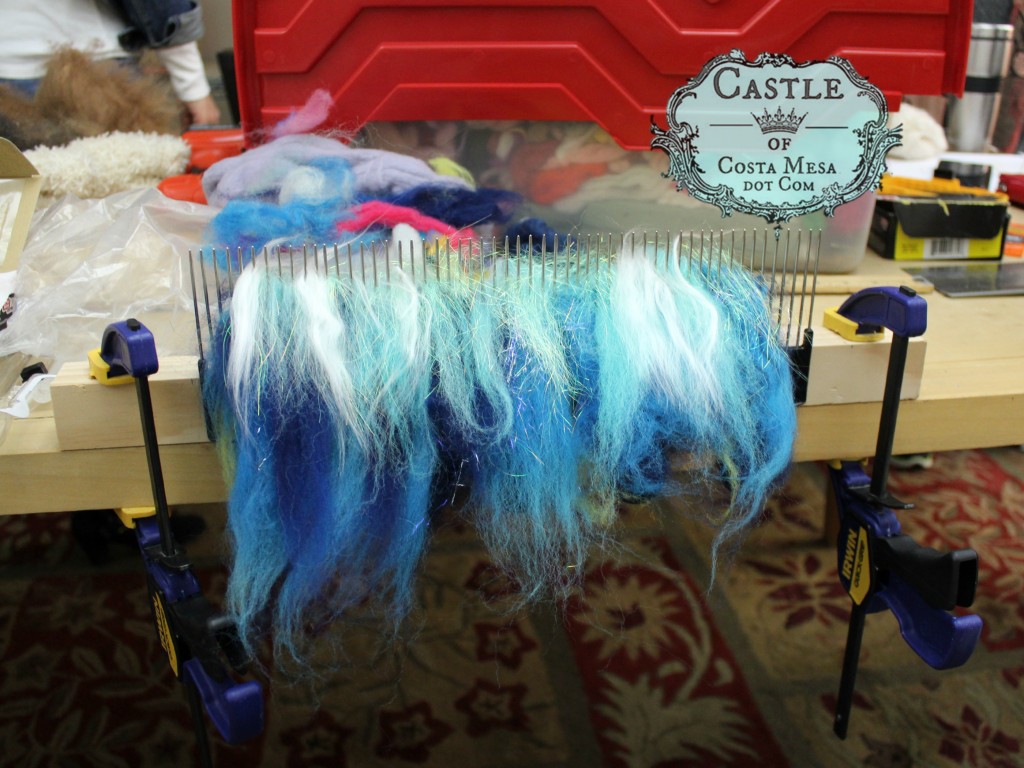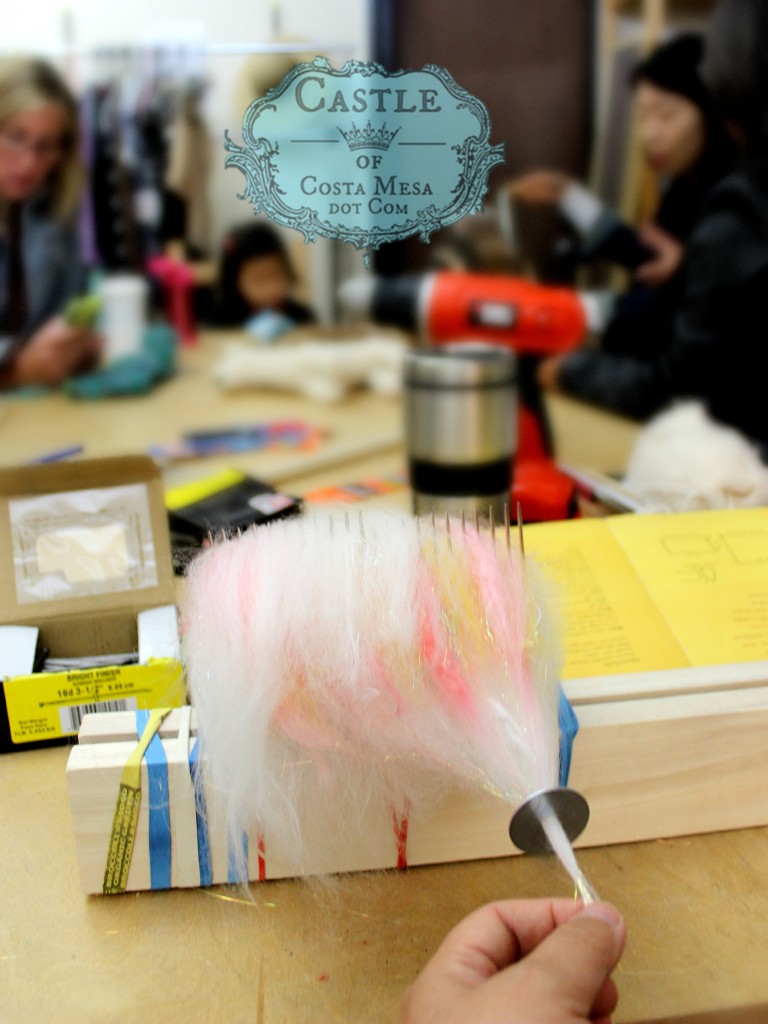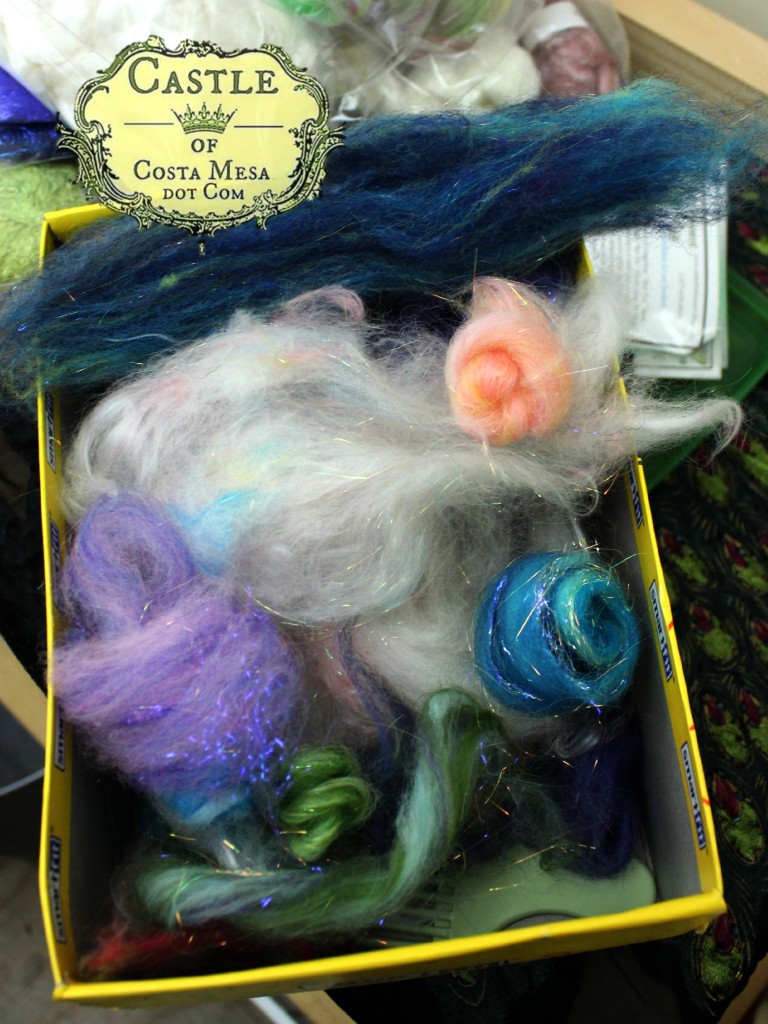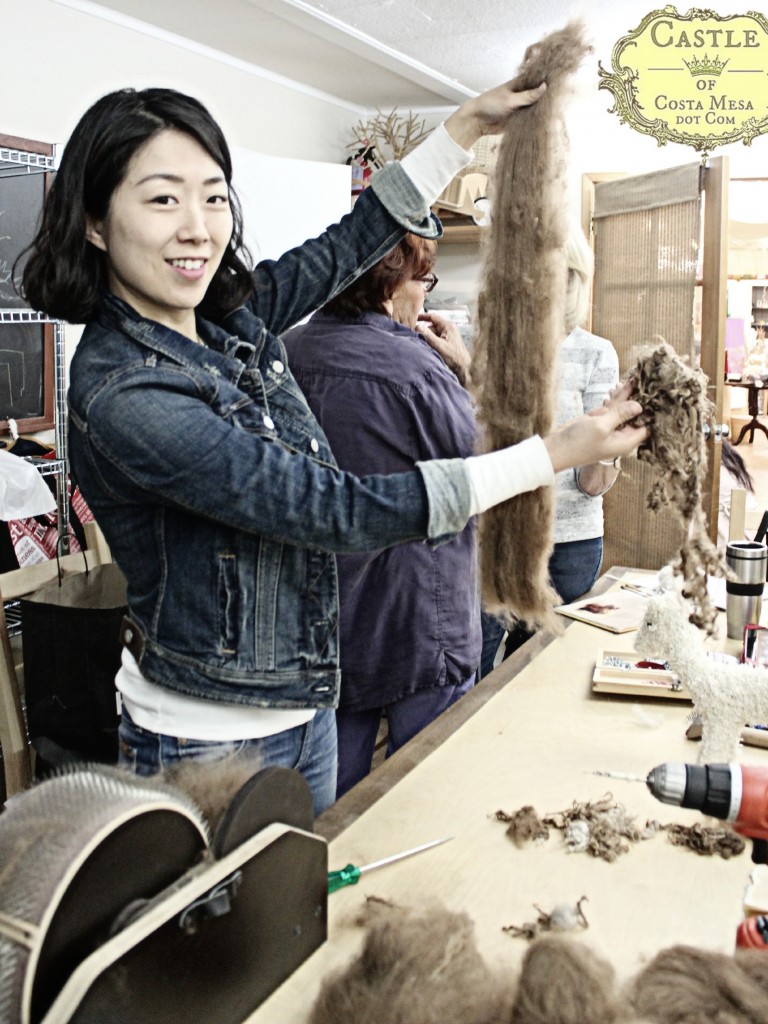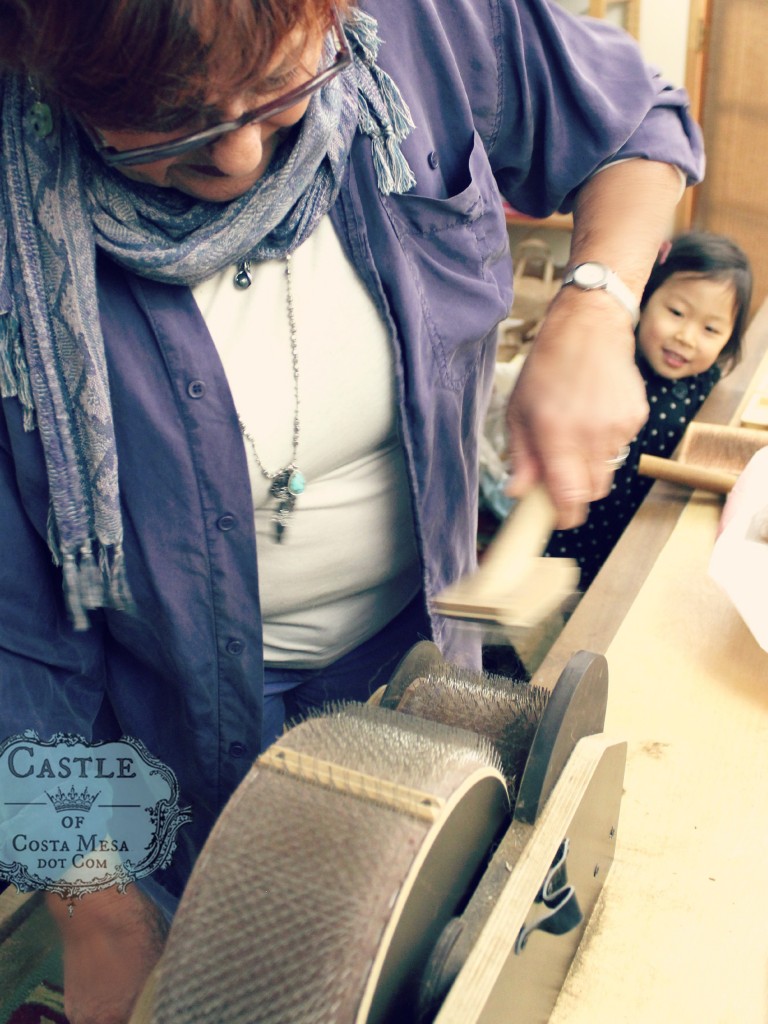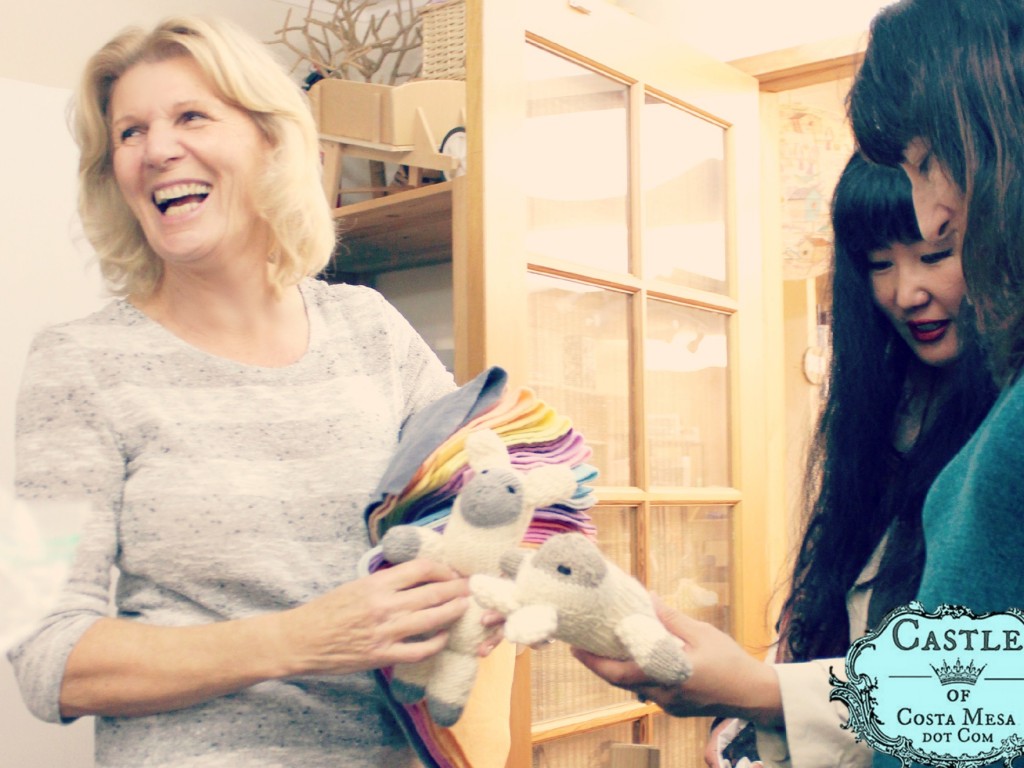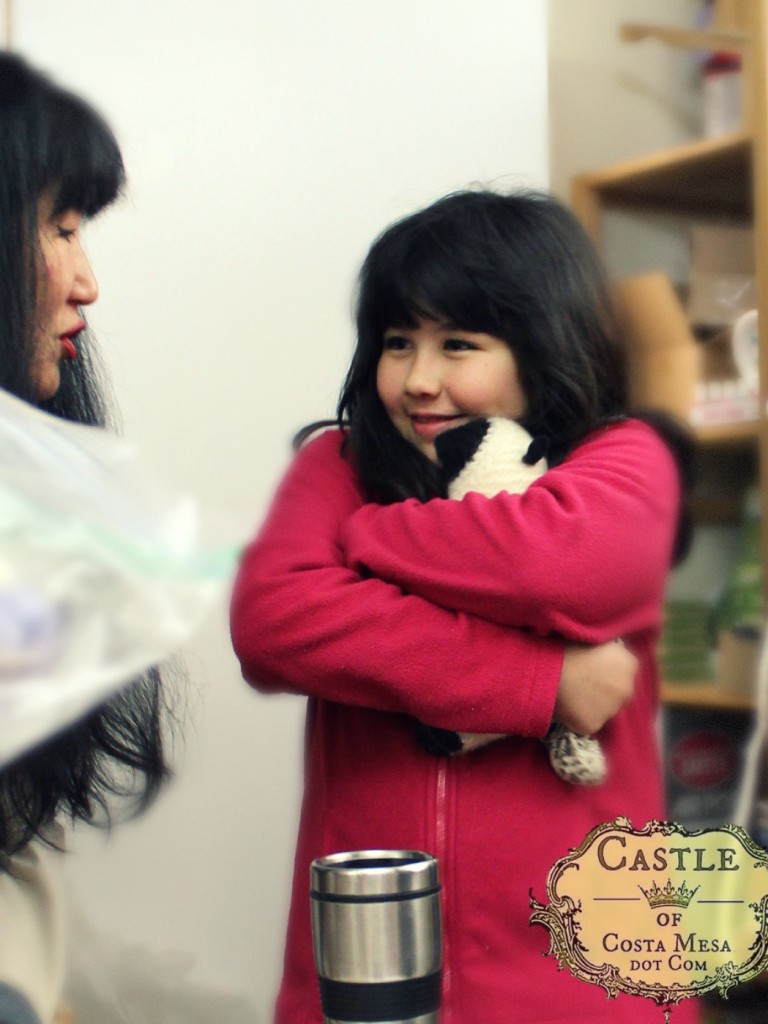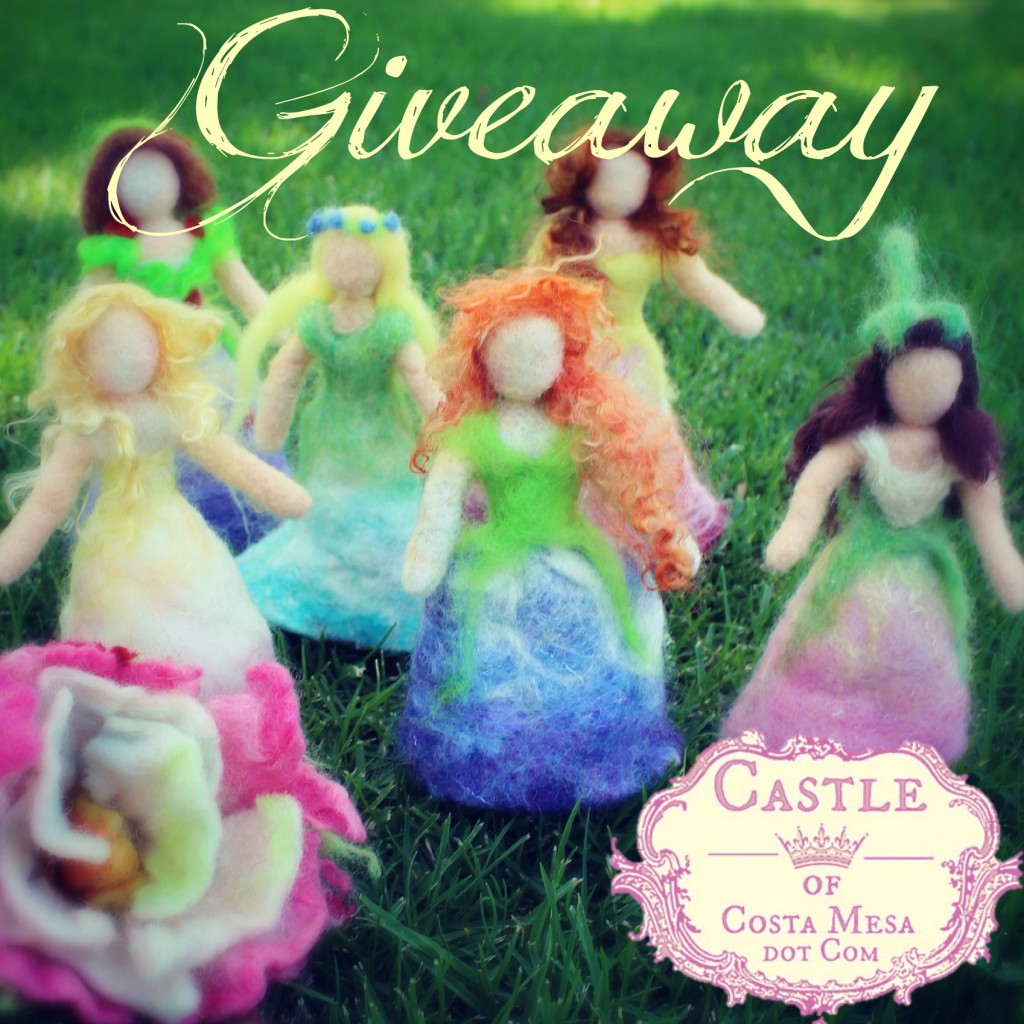Tuesday, February 10, 2015.
Christine Newell, the handwork teacher at The Waldorf School of Orange County, led our weekly craft group through a farm to fiber block, to show us how raw fleece is grown, processed into the yarn and ultimately the clothing we wear. Farm to fiber block is part of the 3rd grade curriculum at our Waldorf school.
Menu
- Tuesday, February 10, 2015. Visiting Alpacas at Windy Hill.
- Now for a random funny video about shearing sheep.
- Monday, February 23, 2015. Carding raw fleece and …
- Monday, March 2, 2015. Making Wool Blending Hackle and Other Joys of Working with Raw and Processed Wool.
- Back to Gallery of Waldorf School of Orange County weekly craft group main page.
Visiting Cindy’s Alpacas at Windy Farm in Somis, Southern California
Our craft group visited Cindy’s lush, green beautiful open air alpaca farm in Somis. It is called Alpaca’s at Windy Hill if you want to go and visit them, click here to see their website.
Click here to jump back to the top of the page.Whee!
Gallery of Past Projects from Our Waldorf School of Orange County Monday Morning Craft Group
Click on below picture to see a gallery of our past craft group projects.
You can “like” and follow our weekly craft group projects on facebook here.
Alpacas are originally from the Andes mountains in South America and are related to llamas and camels as members of the camelid family…
…They are much smaller than llamas and have traditionally been bred for top quality fleece that is comparable to angora or cashmere.
Kiss kiss!
The children are very fascinated to see that the different types of alpacas have different shapes and colors of poop! This guy has little dark pellets.
Cindy has fluffy Huacaya and silky Suri alpacas on her large farm.
Vi and Anička tried to feed the alpacas some alfalfa hay but the well-fed animals were not interested.
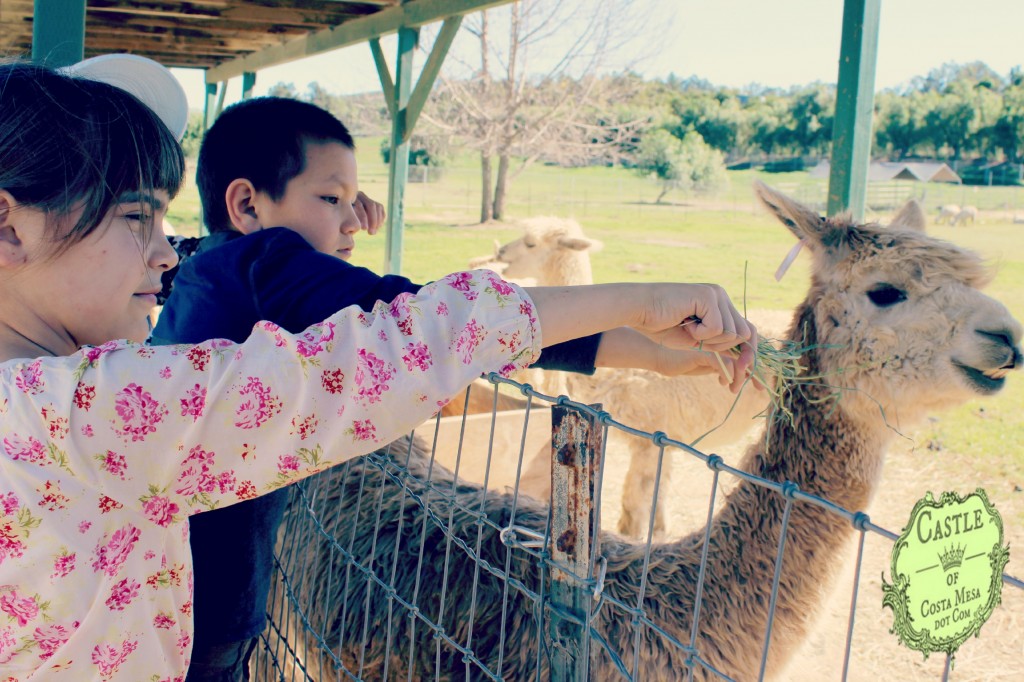
Kathy taking pictures of alpacas.
The children watched this mother nursing its baby alpaca. There is also a pregnant female in this pen.
our littlest visitor at the alpaca farm today: Claudia’s beautiful little girl
My mother Teresa came to visit us from Malaysia for the upcoming Chinese New Year of the Sheep celebration. She came with me, her fiber enthusiast daughter to the farm. Here she is attempting to bond with alpacas a la Saint Francis of Assisi!
My mother-in-law also came with our craft group to the alpaca farm. She has seen many sheep but this is her first time seeing alpacas. Zhenny came all the way from Sofia, Bulgaria.
Many of us bought large bags of very economically priced raw fleece from the farm. There were white, grey, beige, cream, brown, black ones in silky and in fluffy textures. I also bought beautiful and luxurious carded and dyed (one seafoam green and one pink bag) alpaca roving for my needle-felting projects.
There were more varieties than this. Here is a small example of the raw fleece we purchased from the farm ready to be carded next.
Click here to jump back to the top of the page.Whee!
…And now for a random funny video about shearing sheep!
FCB New Zealand advertistment. So funny!
Click here to jump back to the top of the page.Whee!
Carding Raw Wool Fleeces with Drum Carder
Monday morning, February 23, 2015. Back at the school, now Christine showed us how to process the raw fleece.
We bought many different kinds and colors of Huacaya and Suri alpaca raw fleeces. Kathy also brought in raw sheep’s wool from her friend’s farm for us to practice carding.
Here are some of the fluffy white Huacaya alpaca raw fleece that we bought from Cindy at “Alpacas at Windy Hill” Farm in Somis, Southern California. Christine washed the raw fleece and dried them for days.
Christine showed us how to card raw fleece with a drum carder. I have included a youtube video of how to card raw fleece here, for your reference:
Here we see Melissa showing our new guests, a set of homeschooling triplets how to lift carded wool fiber off the drum carder, using a screwdriver.
The resultant alpaca wool top which we drum carded this morning. No more vm (vegetable matter). So soft and fluffy! Ready to spin into yarn for knitting!
Look! Christine knitted an alpaca plush toy! Isn’t it adorable? Note, the knitted alpaca stands in a big bag of fibers: on the left front is curly raw suri alpaca fleece. On the right front is drum carded Huacaya alpaca fleece.
Kathy showed Tristan how to hand card smaller amounts of raw alpaca fleece. The raw Huacaya alpaca fleece is in the foreground of the photo below.
Here is my first attempt to needle-felt using alpaca wool (that I previously bought on Etsy) instead of sheep’s wool. I notice alpaca wool top is so smooth, luxuriously soft and thicker strands than sheep’s wool. Here is what I made with alpaca wool top…
Guardian Angel on Castle of Costa Mesa Etsy store
Do check back next week to see what our further work with this carded wool!
Click here to jump back to the top of the page.Whee!
Needle-Felting Dolls
While awaiting my turn at the drum carder, I started to needle-felt some gnomes. Here are some examples of the gnomes I made recently(using my own personal stash of colorful sheeps wool), available for sale on my Castle of Costa Mesa shop on Etsy.
Castle of Costa Mesa Etsy store
The children saw me needle-felting and asked to join in, so I showed them how to needle-felt some dolls. Here’s what we made quickly this morning.
A closer view of the dolls…
When everyone was done with carding raw fleece on the drum carder, I took out my own stash of colorful dyed wool batting (not the raw fleece) and started to blend together the colorful wool battings.
I noticed when carding batting, the result is coarser than carding wool top. Wool top when carded together is NICE! I really love! As a comparison to my first attempt at blending colors (using wool batting above), here is an example of carded blended wool top that I love, which I bought from Etsy…
This is a dyed blend of 70% Merino and 30% Bleached Tussah Silk Blend which I did not make but previously bought on Etsy…how I wish I can make something gorgeous like this! I am still learning.
This was what I wanted to achieve. Picture shown here is what I tried to emulate: Ashland Bay 64’s (21.5 micron) 100% merino sheep’s wool multi-color roving in the Rose Quartz colorway.
Here was what I made with my carded batting. Since this is my first time carding colorful wool blends, I had to add more streaks of highlight on the dolls, to achieve the desired effects. Here are my handmade dolls below, available on Etsy:
Castle of Costa Mesa Etsy store
The English lady, which I made… The skirt was brushed wool made by my daughter at home with the use of a new pet hair brush. This was my daughter’s first try at blending wool colors.
Castle of Costa Mesa Etsy store
Thank you for reading my blog. Please support my handwork… you may shop on my Castle of Costa Mesa Etsy store here:
Castle of Costa Mesa Etsy store
Castle of Costa Mesa Etsy store
Castle of Costa Mesa Etsy store
Click here to jump back to the top of the page.Whee!
Making Wool Blending Hackle and Other Joys of Working with Raw and Processed Wool.
Monday, March 2, 2015. Today we continued processing our raw fibers. We also made tools to blend the wool!
This is a dyed blend of 70% Merino and 30% Bleached Tussah Silk Blend which I did not make but previously bought on Etsy…how I wish I can make something gorgeous like this!
This was what I lust over to achieve. Picture shown here is what I tried to emulate: Ashland Bay 64’s (21.5 micron) 100% merino sheep’s wool multi-color roving in the Rose Quartz colorway.
I told Christine I was tempted to dole out a huge sum to buy either a blending board or a fancy art roving hackle to be able to make the above blended wool.
In fact, I was so smitten by the idea that last night, I fashioned a make-shift hackle with 2 planks of wood, sold produce rubber bands and 2 plastic hair picks! See below makeshift hackle on the bottom of the photo…
To my great joy, Christine decide to teach us how to make our own DIY wool-blending hackle for a fraction of the piece !
Christine bought hair picks from Walmart for today’s DIY project!
I was making my own makeshift hackle version ( a glimpse of it on the bottom corner of the photo above) at home yesterday, using plastic hair picks. I really like this metal one that Christine bought, much better than plastic. You can purchase them online on Amazon here.
Hair pick photo source. Photo credit: Masterfile.com
Christian sawing pine plank into several pieces to make several hackles.
Using a pencil and hair pick as a guide, Melissa marked positions for drilling nail holes.
Kathy and Melissa also experimented with a hackle that was made by dropping large nails into holes that were drilled into wooden pieces.
… Kathy adding glue to holes to take large nails.
Two handmade wool blending hackles made by craft group this morning: Top hackle: Melissa drilled the holes and with Kathy they dropped in large nails and epoxy glue them into place. Now drying.
Bottom hackle: Melissa screwed in the hair picks. I used this one this morning to experiment in blending wool roving and sparkles.
Thank you especially to Melissa, Christian and Kathy for the elbow grease and Christine for gathering the supplies and to those who help pay for them.
Questioning Christine’s ability to appear content in a world without sparkles, I brought in my own stash of Angelina fiber for my maiden run of the handmade hackle…
I felt that my first trial of blended roving was not tidy enough, so I decided to see what happened if I run them through the drum carder. (Later I learned: my mistake was running wool batting on my hackle. Wool batting, when ran through the hackle will not have the smooth, combed delicate effect as running combed wool top through it. The best results is to use wool tops, not wool batting on the hackle. The wool batts should be carded on the carder first, to get the neatly combed, delicate look).
I am learning to diss some fibers from my makeshift DIY wool blending hackle (which I made at home last night with hair picks, 2 wooden planks and tough rubber bands).
If you would like to see how to diss, you can check out youtube videos, such as the ones on Blue Mountain Handcrafts here: http://bluemountainhandcrafts.com/art-roving-hackle.html
Here is the box of blended wool tops made by me today and by me and my daughter at home yesterday.
Of the three types of DIY hackles we had here today:
(1) My hastily made one from last night at home: with plastic hair picks and sturdy rubber bands – the hair picks were not stable and move when I diss.
(2) The hair pick with black metal teeth Walmart hair picks and a set of vice from Home Depot to hold it down -That is my favorite hackle! (the craft group later autographed it and gave it to me for my March birthday! YAY!)
(3) The DIY hackle using large nails – the nailes were too large, I prefer (2) with finer metal teeth.
If you want to see what a real hackle looks like – here is a beautiful art roving hackle by Blue Mountain Handcrafts.
As I researched into tools to blend roving, I wondered if these will work as well. Let me know if you have tried them.
- Flax hackle or something like that.
- Hair/wig making hackle like this one on ebay.
- This wool blending hackle.
Gloria holding freshly carded alpaca wool roving and raw alpaca fleece from Cindy’s Alpacas at Windy Hill Farm. With this luxurious alpaca roving, Gloria wants to wet felt a light vest for her little girl!
Gisela cleaning up raw brown alpaca from the drum carder so I can feed my blue fibers into it to card my wool.
Christine and her mother Audrey knitted many farm animals. Here are my favorite adorable twin lambs. Sophie bought them from Christine right away.
Another one of Christine’s handmade lamb, much loved!
Click here to jump back to the top of the page.Whee!
Schedule: Upcoming Monday Morning Craft Group Projects and Other Local Crafting Events
You can “like” and follow our weekly craft group projects on facebook here.
Click here to jump back to the top of the page. Whee!
Support Our Local Waldorf Community/ Place a Free Ad
If you are interested in placing an ad on “Support Our Southern California Waldorf Community”(free if you are a member of Southern California Waldorf community) please e-mail me a good picture and a link. If you would like a free shout out for any special events or offer, let me know as well. Time permitting, I will toot your horn. Meanwhile, please support our local peeps! Thanks! – Jzin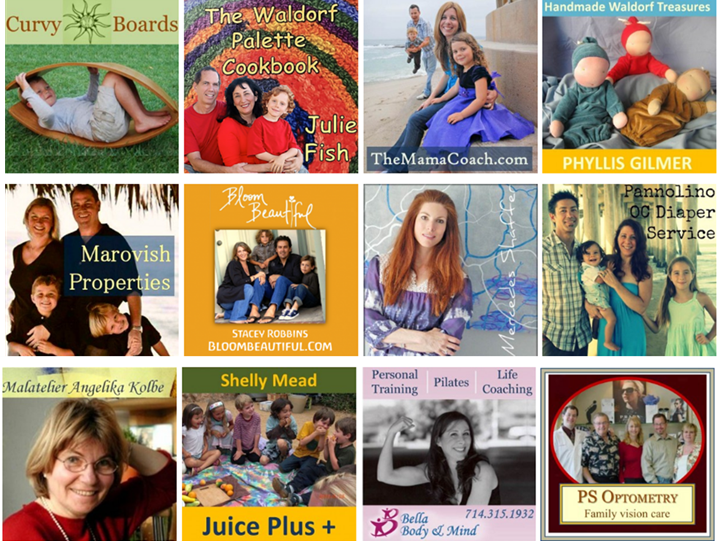
Be in the know for upcoming handmade giveaways: Like CastleofCostaMesa.Com on Facebook
I give away my lovingly handmade dolls and crafts seasonally. If you “Like” my Castle of Costa Mesa Facebook page, you will be notified of upcoming giveaways. Click here to view the list of my past giveaways. Perhaps the next winner could be YOU?
Click here to jump back to the top of the page.Whee!


